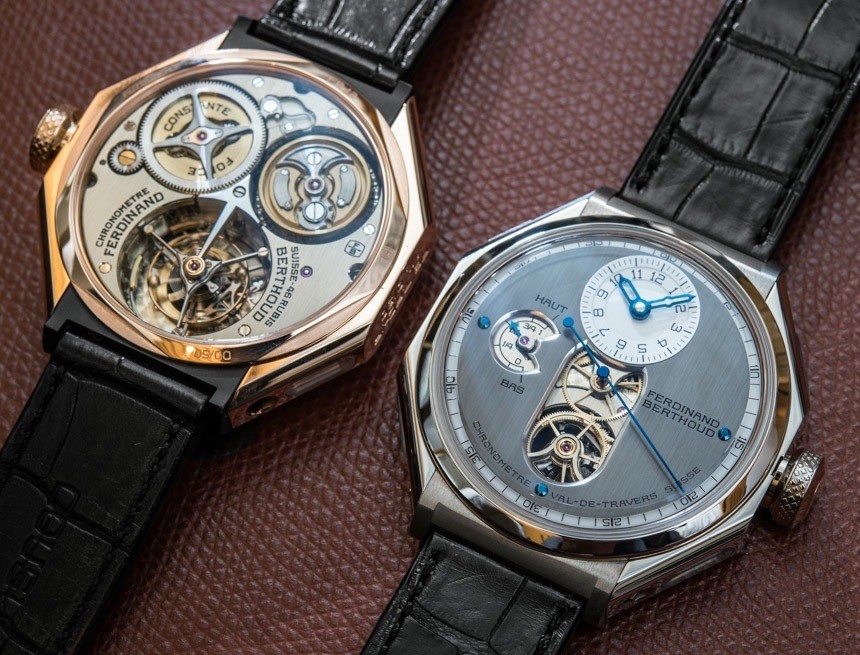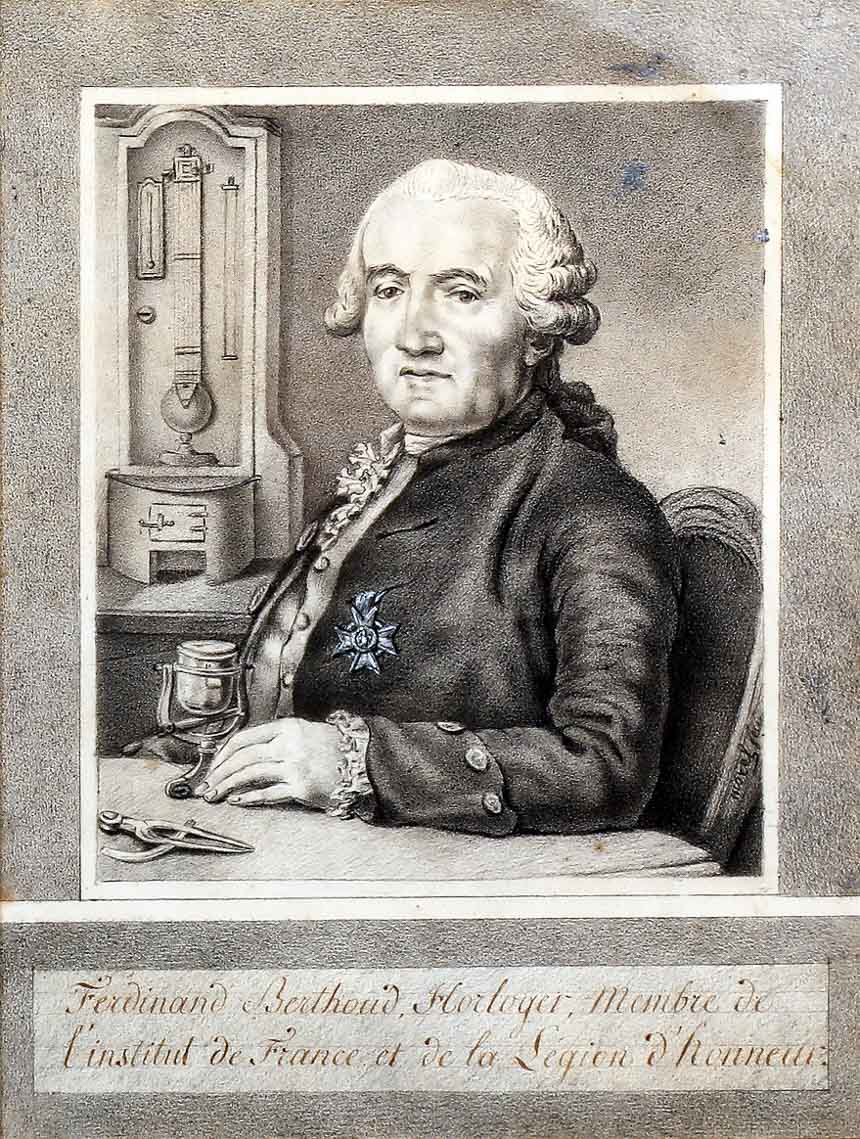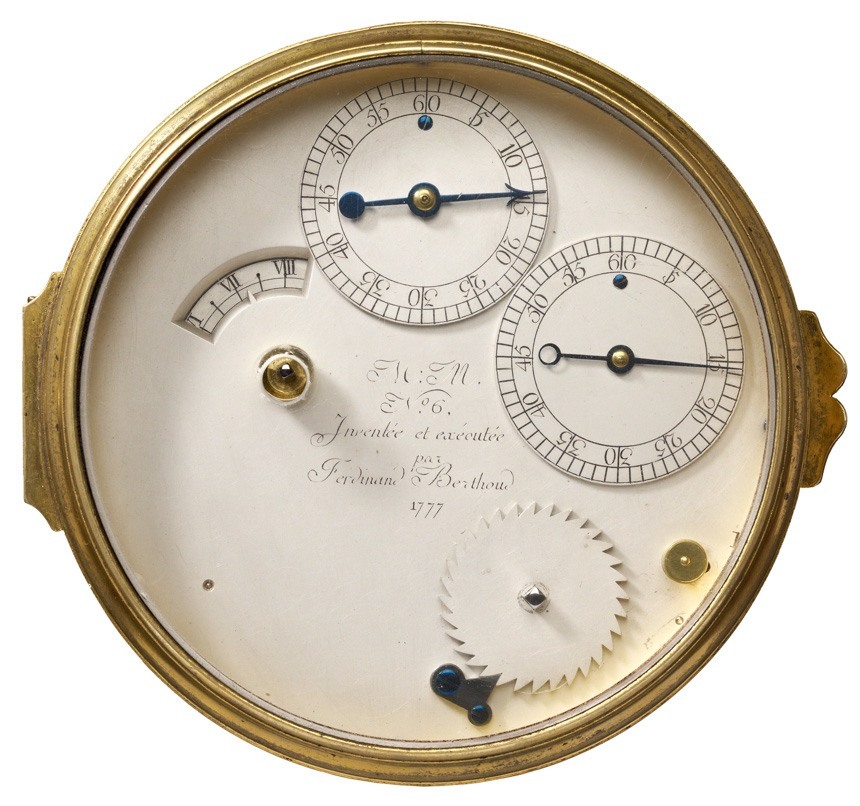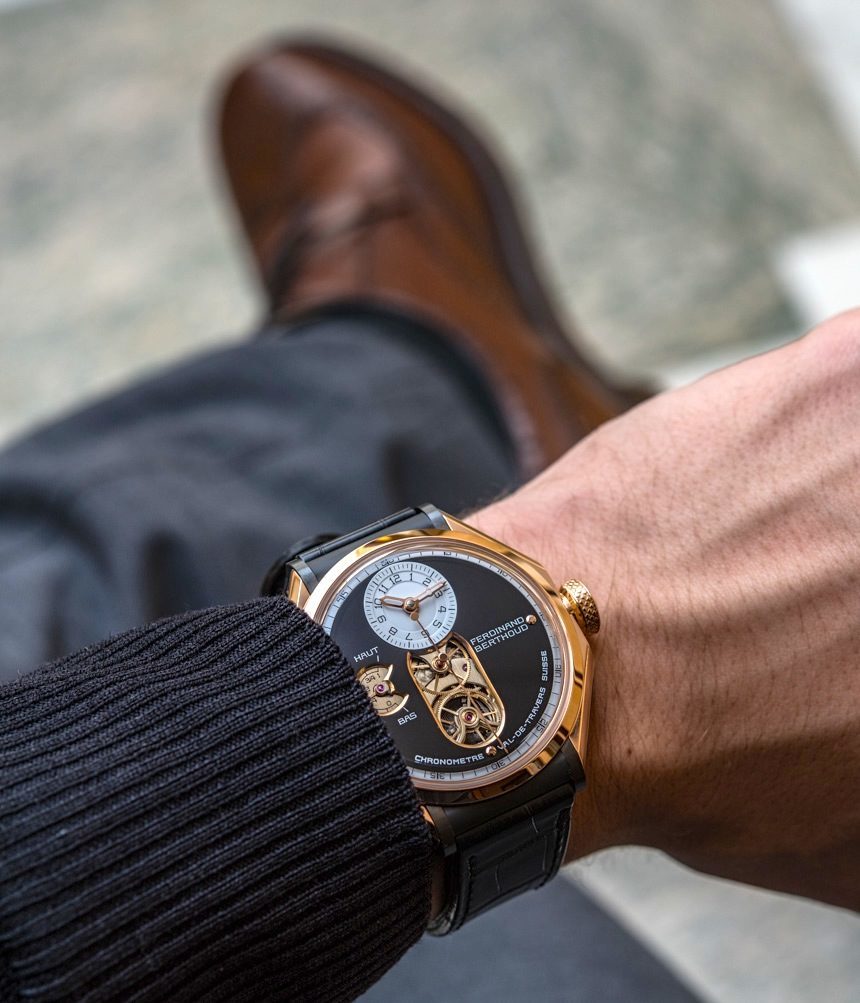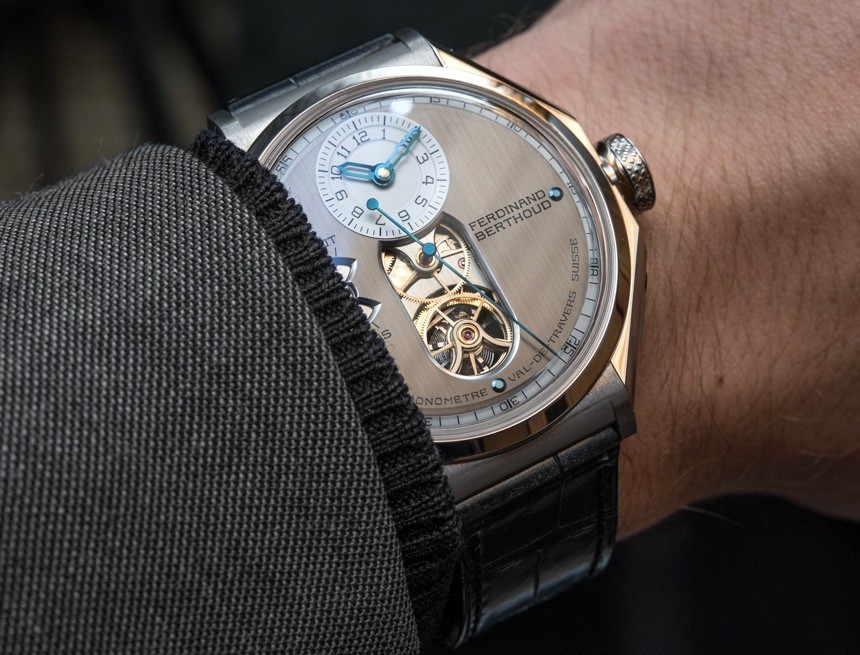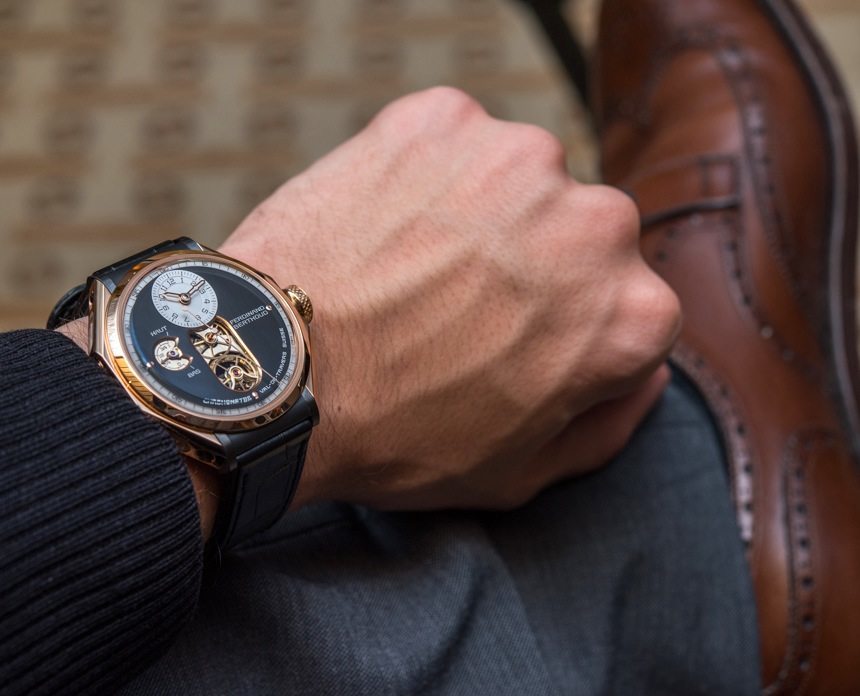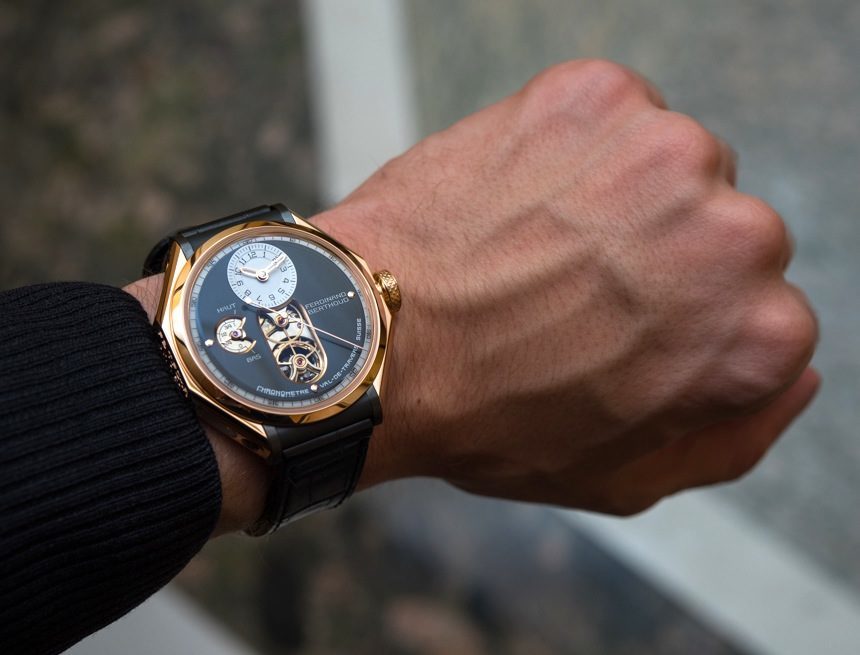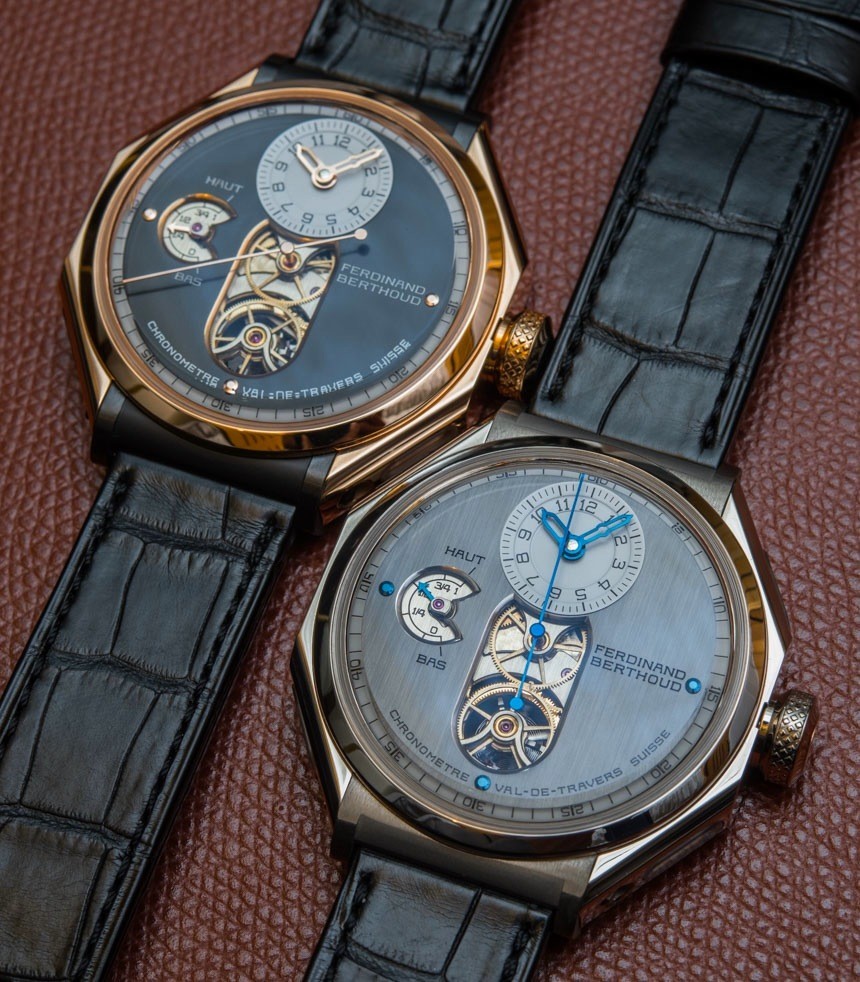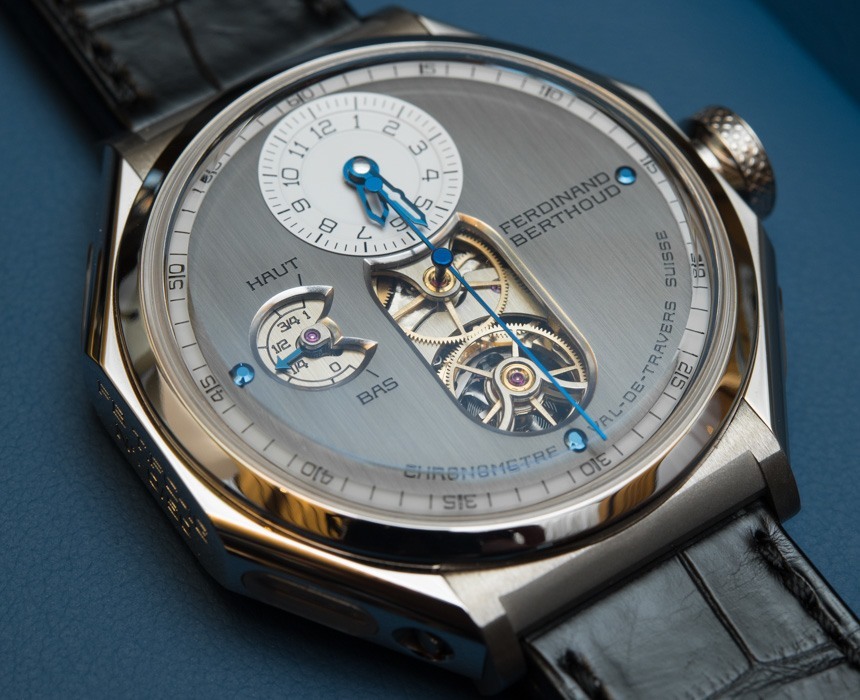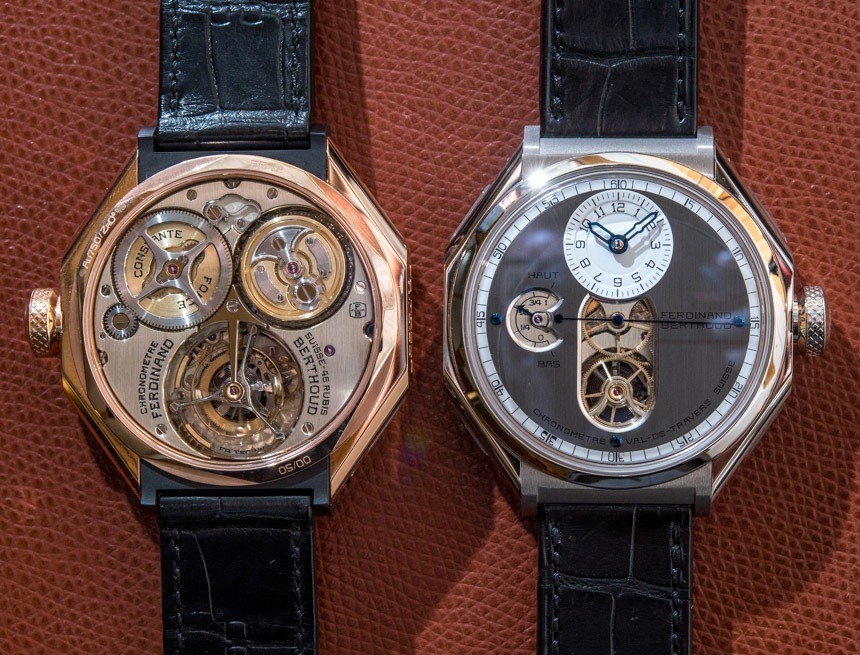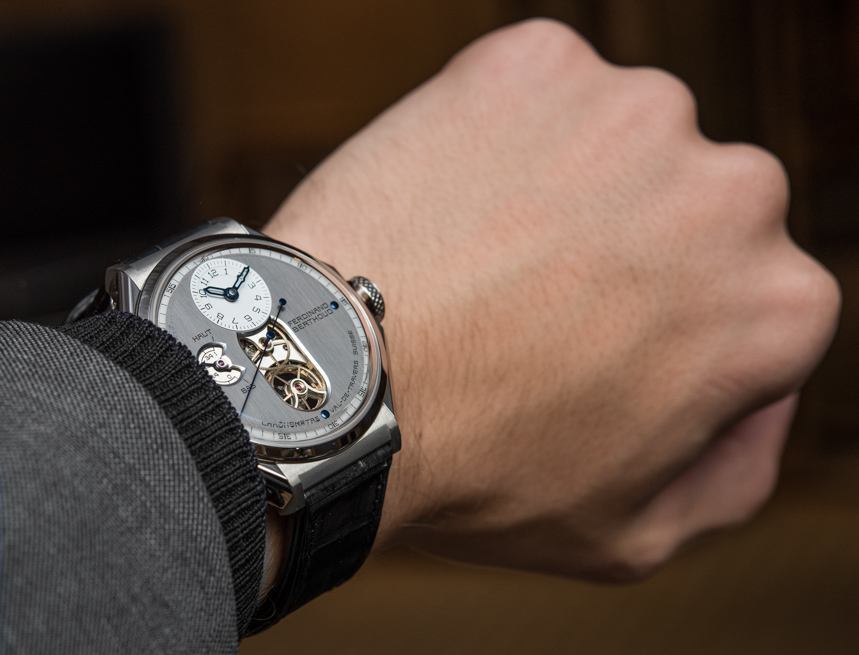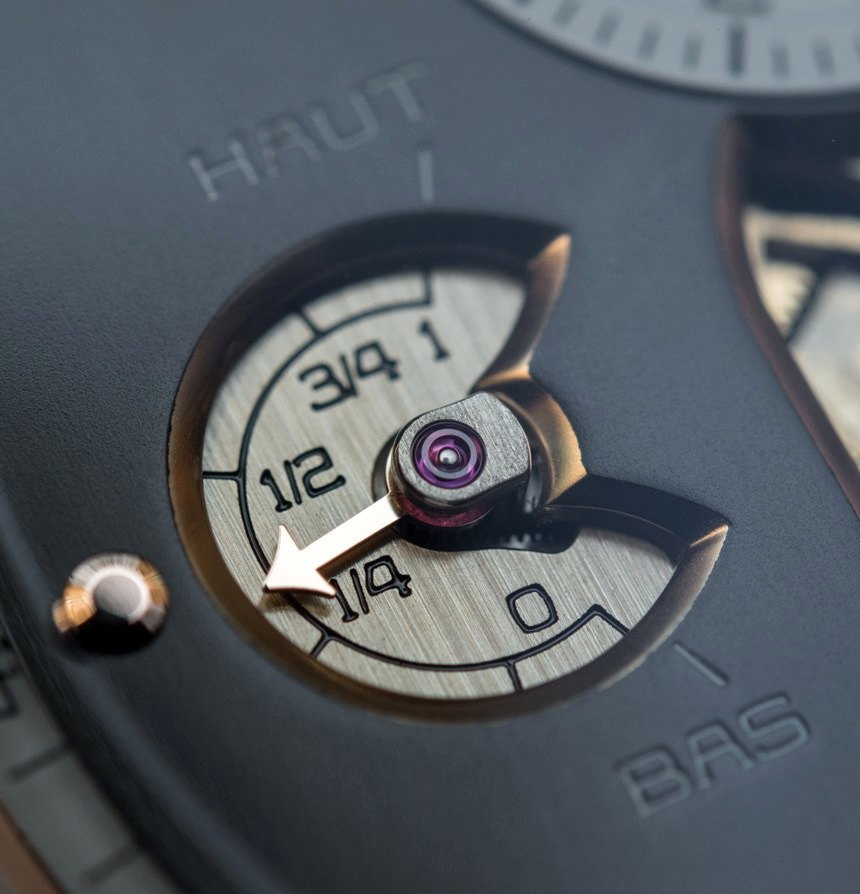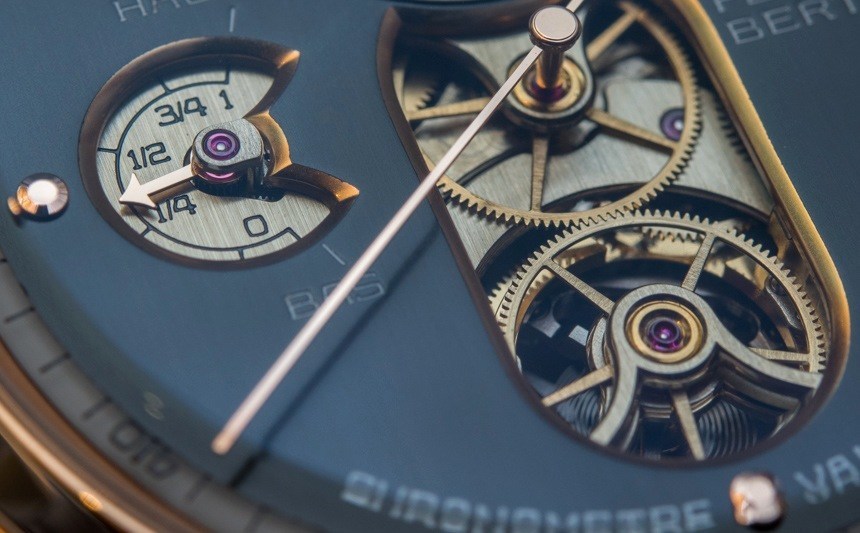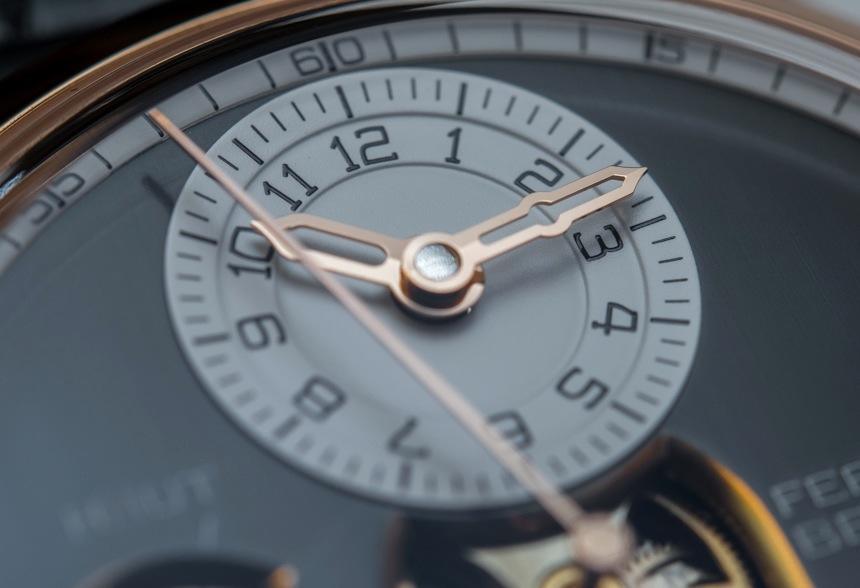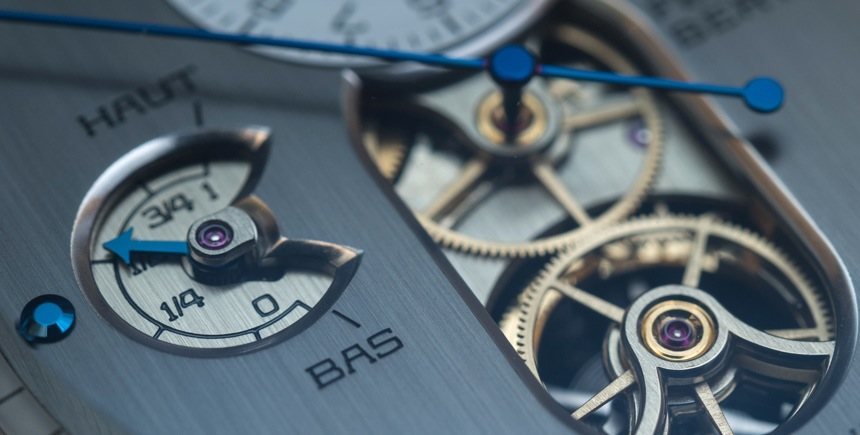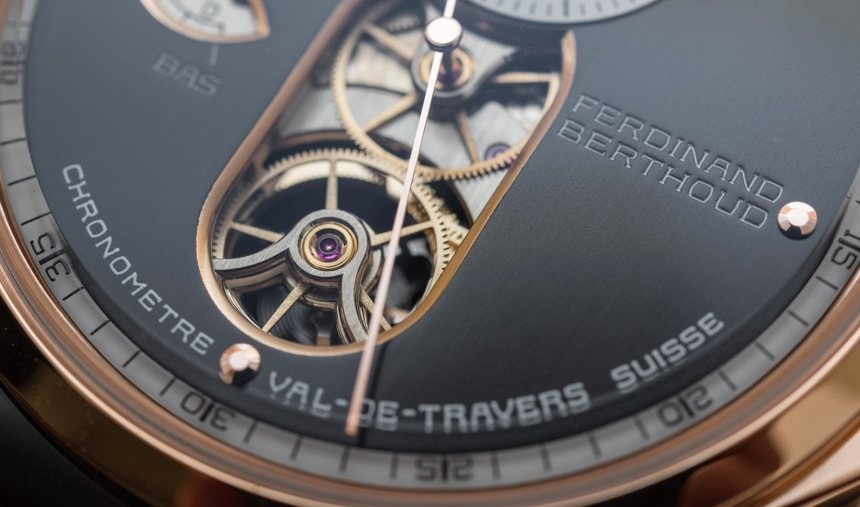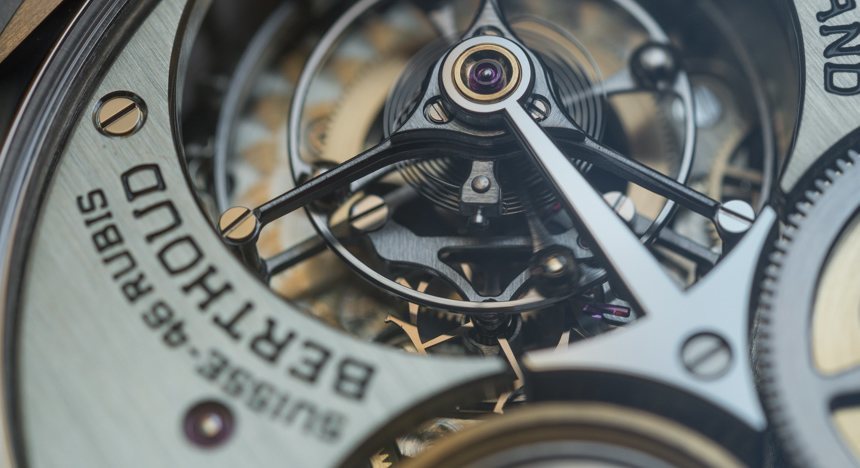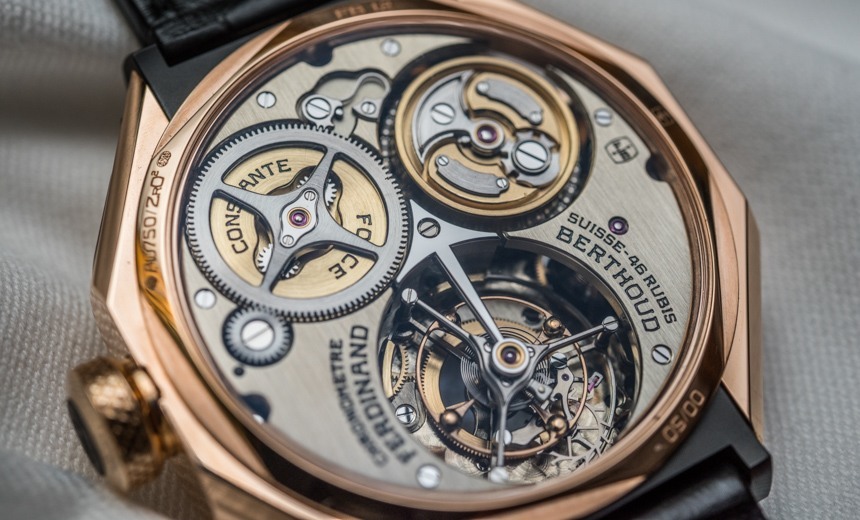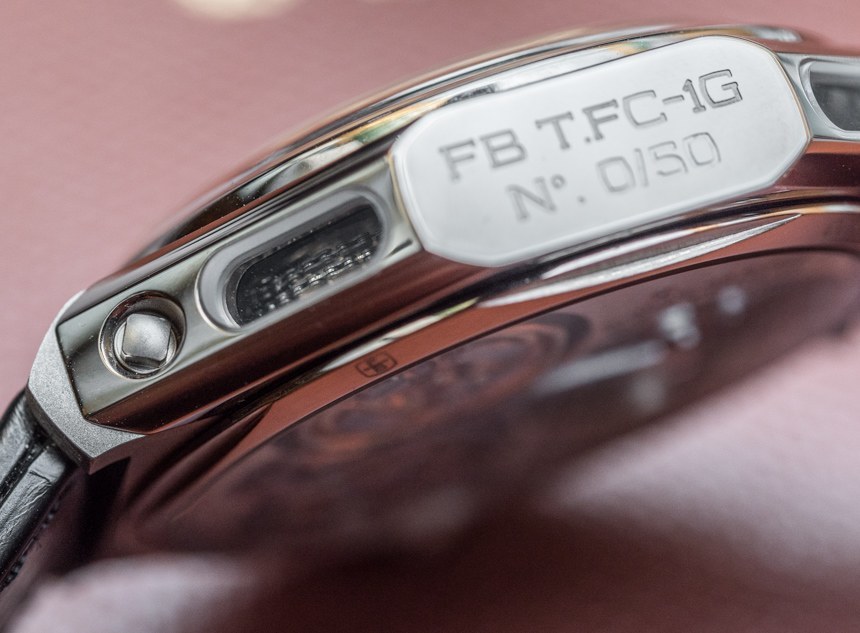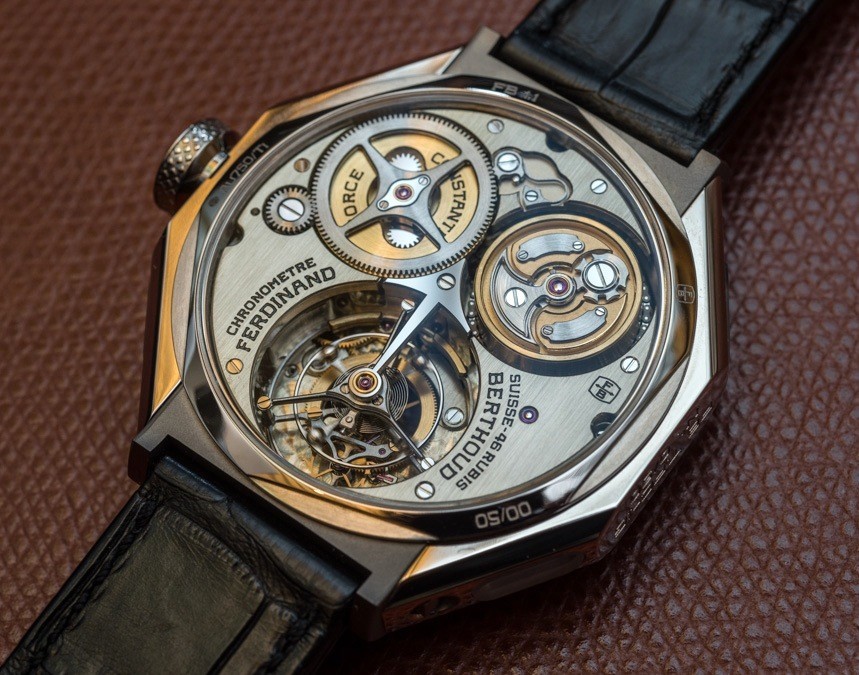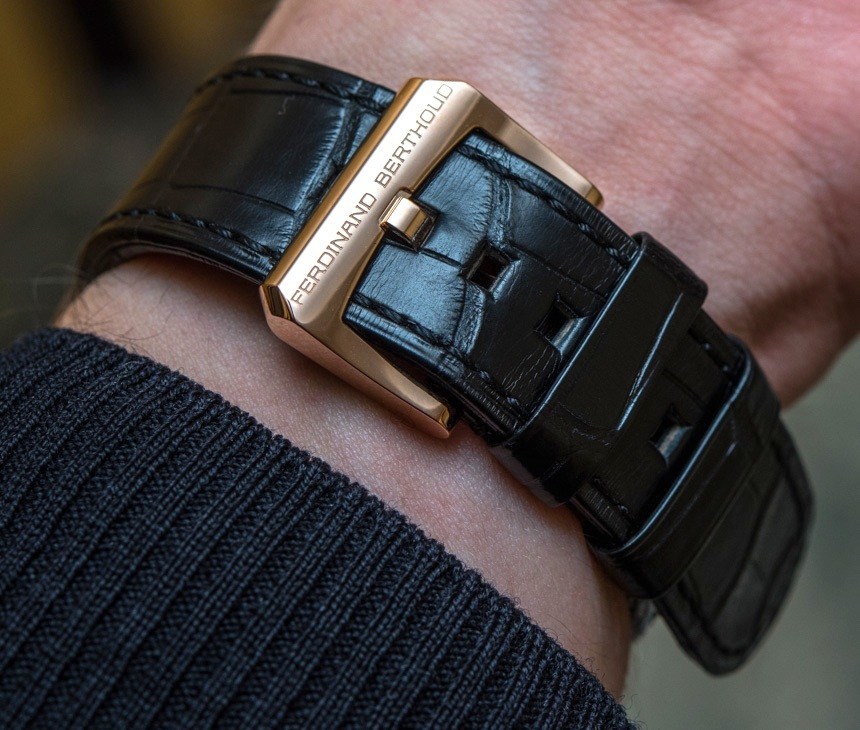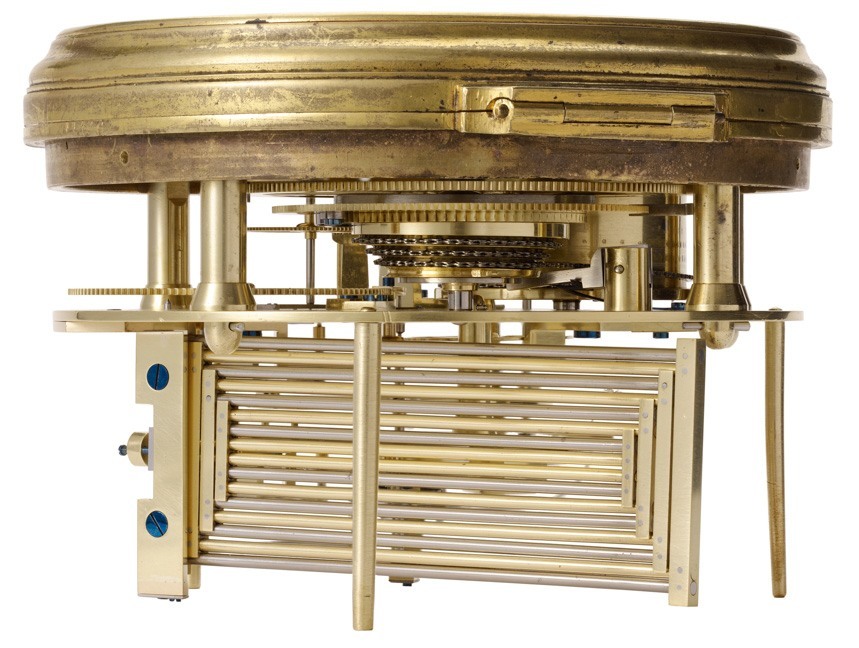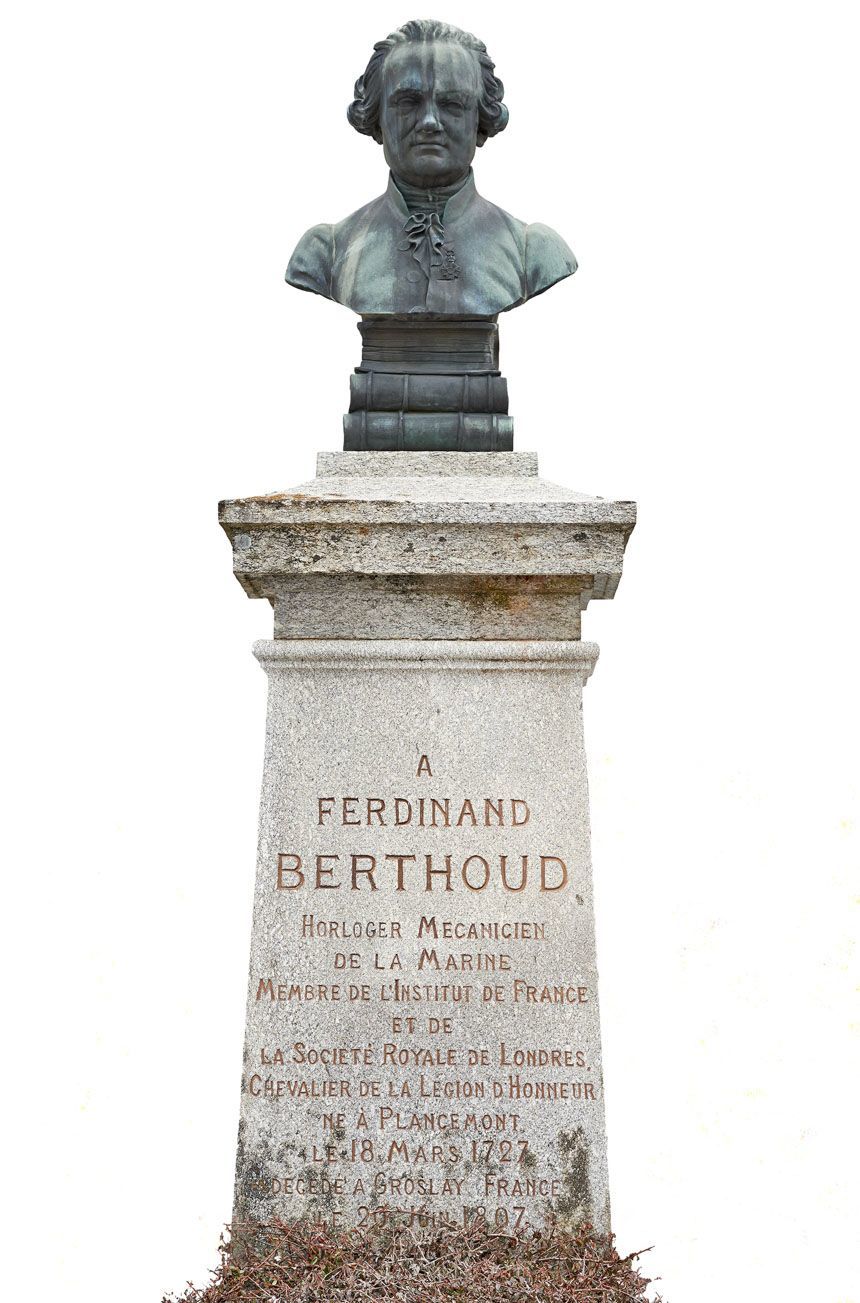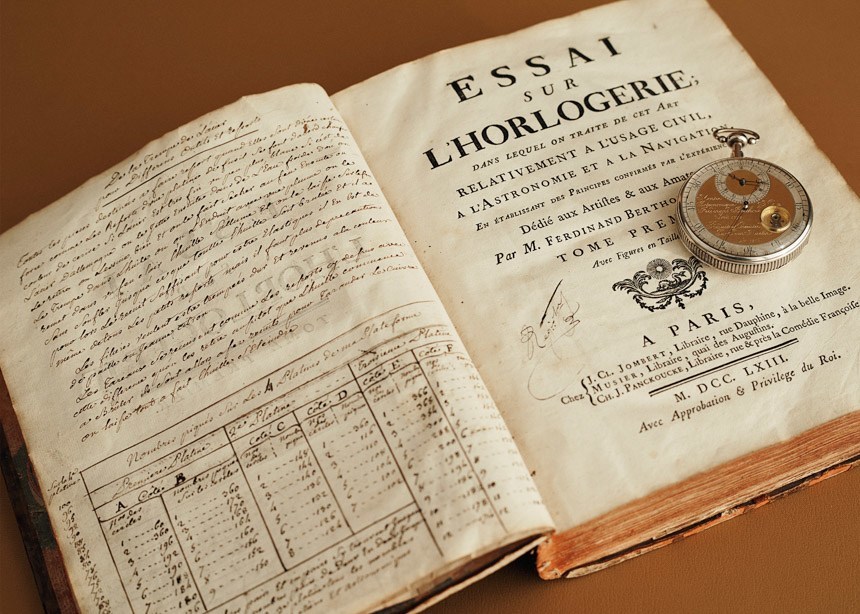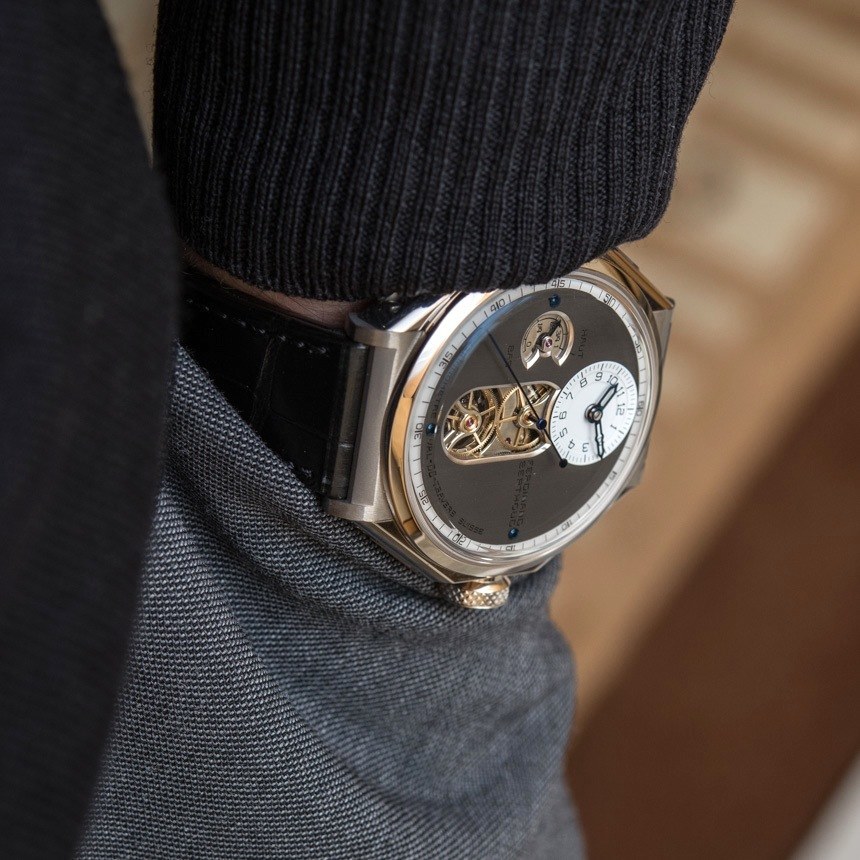
To put it mildly, I am skeptical whenever I hear about the modern “resurrection” of the name and heritage of a famed watchmaker who worked centuries ago. We have seen more than a handful of such stories unfold – into nothing – in recent years of the luxury watch industry, stories where the connection between the name, the inventions, the heritage, and the new, often highly complicated watches is basically non-existent. It takes a more intelligent and thoughtful approach, a considerable budget, vast know-how, and a lot of time to make sure an important heritage is actually carried on in a way that is worthy of our attention (and of the educated collector’s budget). With Chronométrie Ferdinand Berthoud, at last, it all comes together.
There is more to it than meets the eye – and this is true for the Chronométrie Ferdinand Berthoud FB1, the first watch to re-introduce the name, in more than a few ways. Berthoud’s heritage and achievements, as well as the new watches’ design and technical background, all share the same secrecy, in the sense that you really have to do your homework to be able to appreciate what really is on show here – and further below the surface.
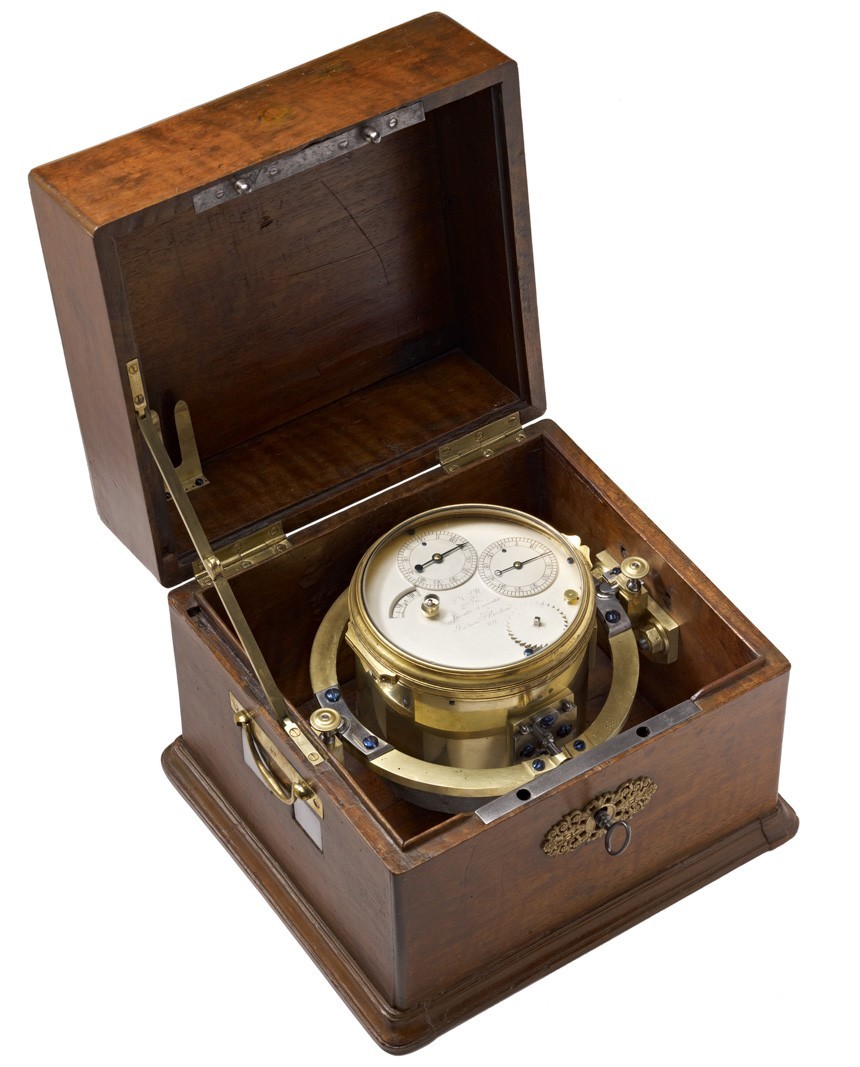
Ferdinand Berthoud’s Marine Chronometer No. 6, an extremely accurate and reliable timepiece that allowed for the accurate determination of a ship’s position
The Ferdinand Berthoud Heritage
First, some history, to understand the scope of magnificence that is reflected in the work of Berthoud. Ferdinand Berthoud was born in Val-de-Travers (which today is in the Neuchâtel canton of Switzerland) and lived between 1727 and 1807 – I am yet to decide what to make of the fact that, at this point, I know this by heart and didn’t have to look up the press release. When he was 18, he moved to Paris to study clockmaking – it is interesting to note how one had to leave Switzerland to be surrounded by the best of the trade. At the extremely young age of 26, King Louis XV’s council awarded him with the title of Master Clockmaker; others had to spend well over a decade more practicing the trade to get even close to such recognition.
Thanks to his extremely accurate marine chronometers N° 6 and N° 8, at the age of 43, Berthoud was commissioned as horologist-mechanic to the King and the Navy. And at 77, Napoleon I made him a Knight of the Legion of Honour as a member of the Institut de France. Hence, Berthoud was not your unknown genius, working in a cold and shady attic, for his work to be recognized only ages after; no, he was a watchmaker widely credited (and well paid) for his contributions.

Mr. Karl-Friedrich Scheufele, Co-President of Chopard and President of Chronométrie Ferdinand Berthoud – with an original book and astronomical pocket watch by Berthoud.
We could go into further details of how remarkably successful and uniquely talented Berthoud was – but you surely get the idea by now. The Berthoud heritage was dropped by the passing of his nephew, Charles-Auguste Berthoud, in 1876, and as usual, the rights to the name have changed hands multiple times, until 2005. It was at this time that Karl-Friedrich Scheufele, the Co-President of Chopard (member of the Scheufele family who have been running and, with remarkable success, building Chopard since 1963) stumbled upon a piece by Berthoud as he was looking for historical timepieces to exhibit in the Chopard L.U.Ceum museum.
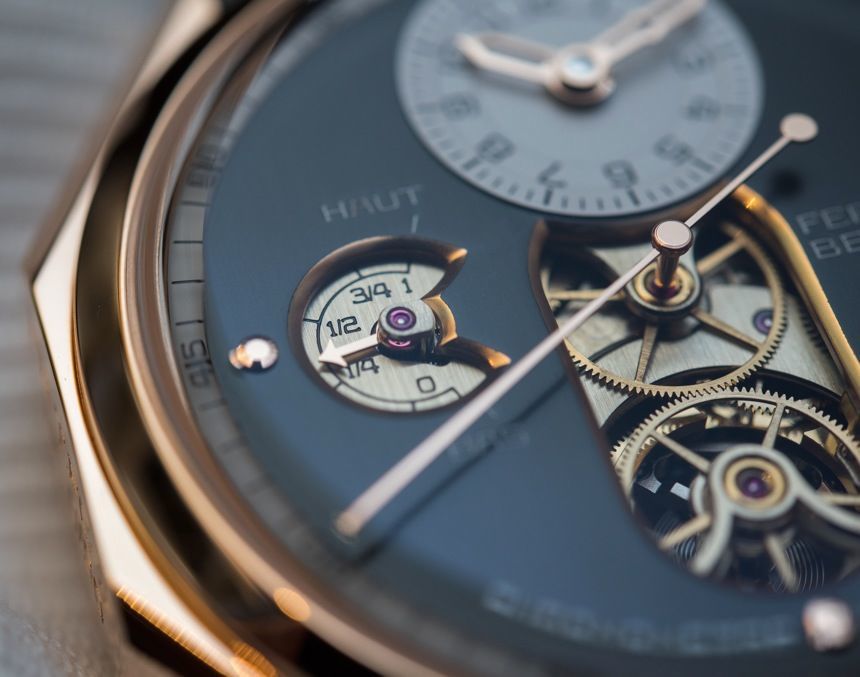
From this moment onwards, Mr. Scheufele dedicated a lot of his resources to acquire the rights to the name and also pieces from the Berthoud heritage – a number of which, including books authored by Berthoud, as well as marine chronometers and pocket watches, we could see exhibited at the Chronométrie Ferdinand Berthoud brand launch event in Paris. So, how does all this vast heritage and the Chronométrie Ferdinand Berthoud FB1 watch blend in 2015?
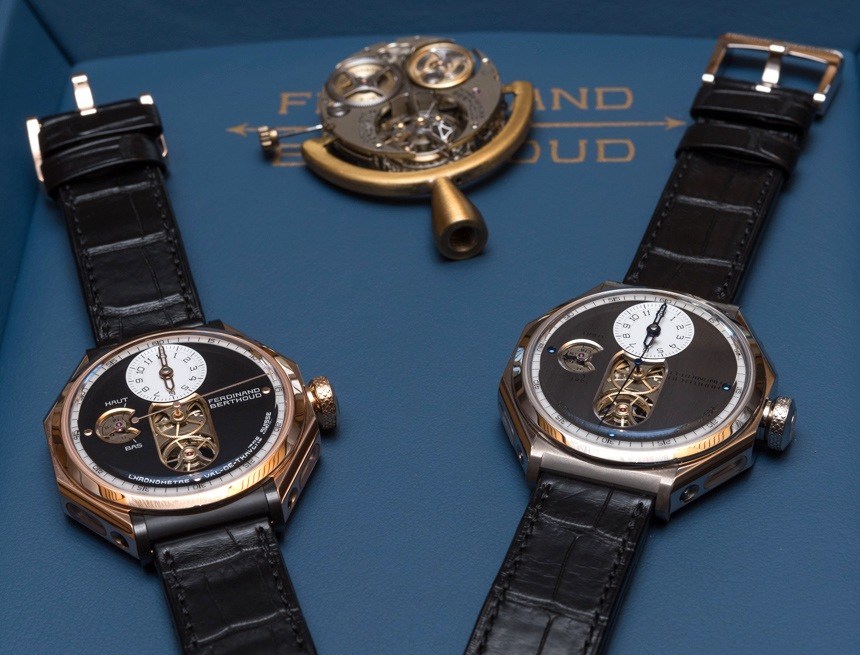
Establishing Today’s Chronométrie Ferdinand Berthoud
The modern Chronométrie Ferdinand Berthoud brand was developed under the aegis of Chopard, as the researching, prototyping, and manufacturing capabilities of Chopard (and especially its high-end division, Chopard L.U.C) were harnessed during the 6-year-long process of developing the company and the FB1. What should be mentioned here is that the modern Chronométrie Ferdinand Berthoud is very much the brainchild of Karl-Friedrich Scheufele, who clearly had a vision that he wanted to realize, comprising a line of bold, new, and highly technical pieces – ones that expressed his genuine passion for and understanding of fine watchmaking, but also ones that could not fit into the Chopard L.U.C collections without damaging its integrity.
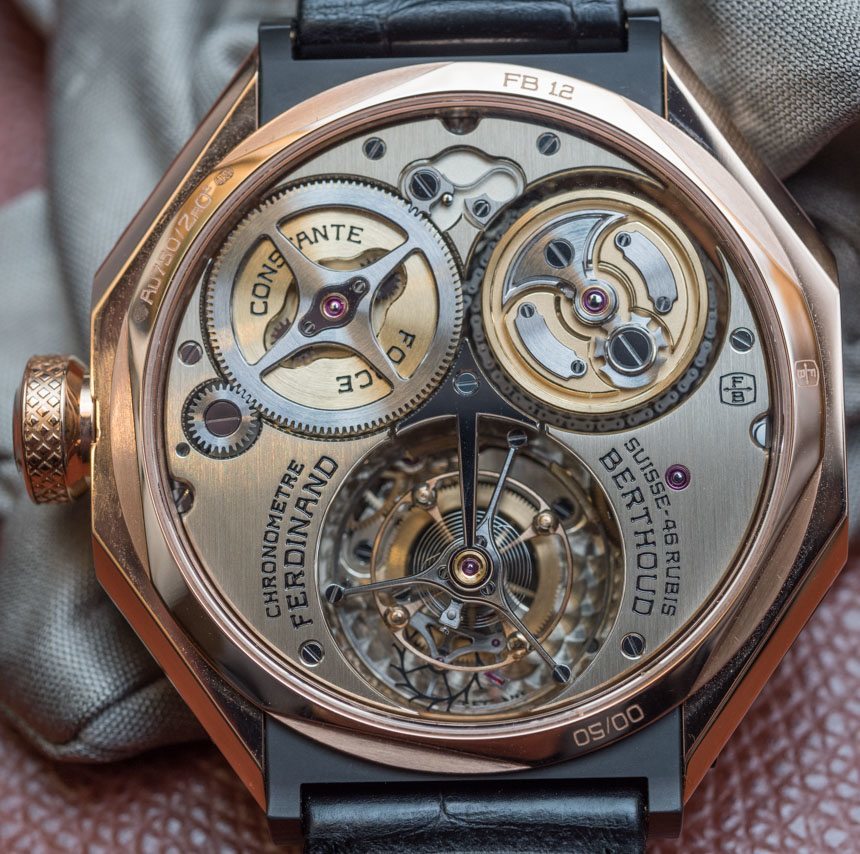
Hence, Chronométrie Ferdinand Berthoud became a blend of some key elements from Berthoud’s heritage and of elements of modern horology which meet Scheufele’s vision and idea. It is a mixed bag – and one that only really makes sense once it has been fully explained…
…This moment is a good one to feel a bit nostalgic about a time when more executions in fine watchmaking required a look under their cover – and fewer displayed all their bells and whistles through excessively skeletonized movements, sapphire dials, and what not. So, in this unusual way, the Chronométrie Ferdinand Berthoud FB1 is once again a nod to some deeper values that horology has to offer.
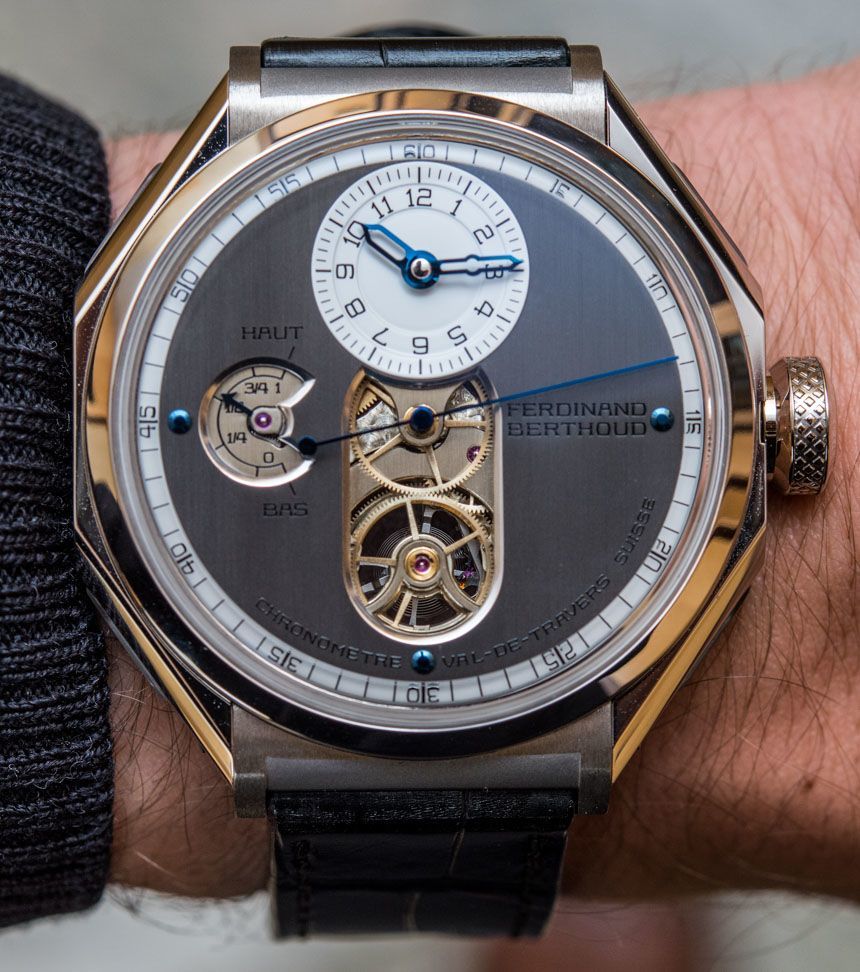
Chronométrie Ferdinand Berthoud FB1 – The First Wristwatch
When I first saw the Chronométrie Ferdinand Berthoud FB1, the 44mm wide, octagonal case struck me first; but, just moments later – in a rush to decode the more watchnerdy parts – I was gazing at that large, oval shaped opening running through the center of the dial. I could see two meshing wheels, one driving the other with the large central sweeping seconds hand fitted on top; but I couldn’t quite understand the need for such an aperture. The proportions between the round dial and octagonal case, as well as between the dial and sub-dial, all seemed right – suggesting some professional design work, but after first sight, I still couldn’t decipher it all.
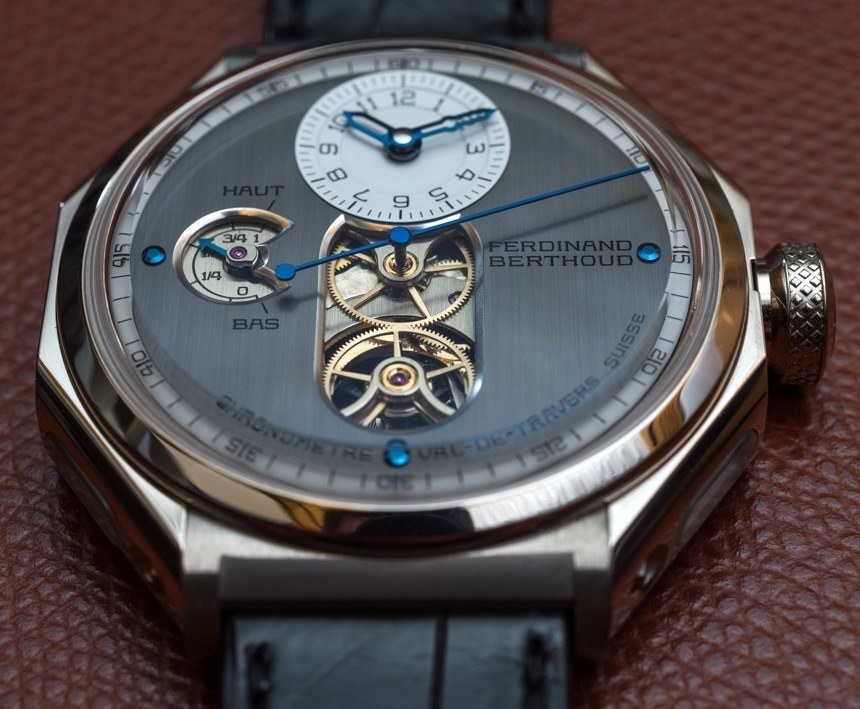
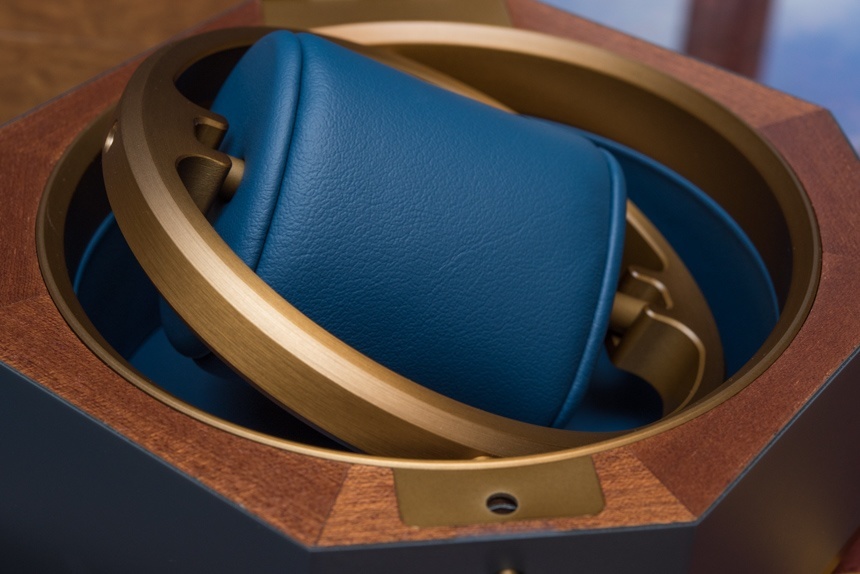
Aesthetics
The octagonal shape of the case, as was explained by its designer and the brand’s creative director, Guy Bove, was inspired by the gimbal suspension system typical of ship’s chronometers (which is also reflected in the gimbal system of the box the watch is delivered in, as seen above). The inner part of the case is actually a cylindrical container that is sealed and that holds the movement and dial, and it is onto this bit where the angular components are fitted with two screws on each side.
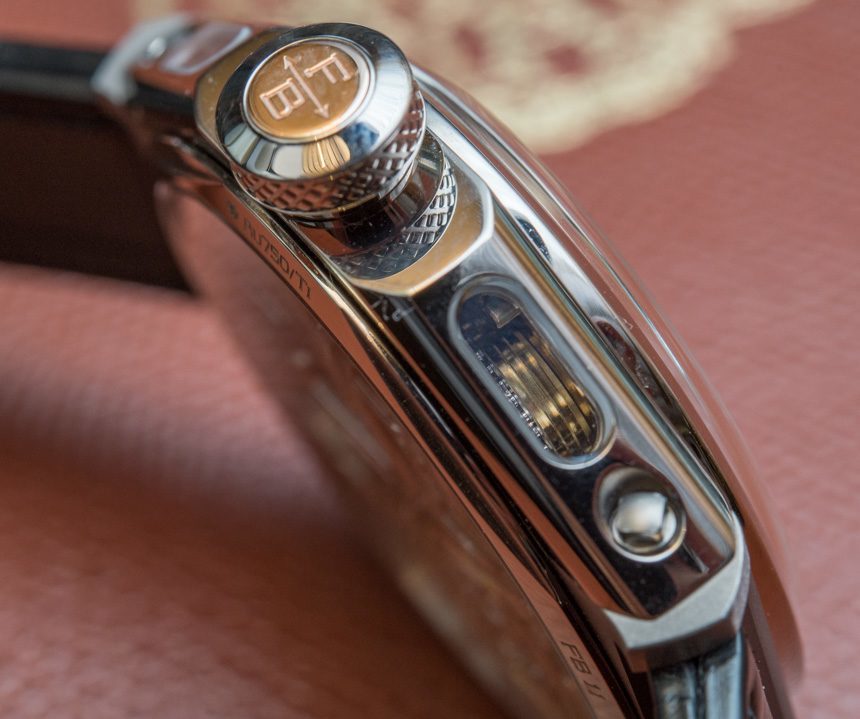
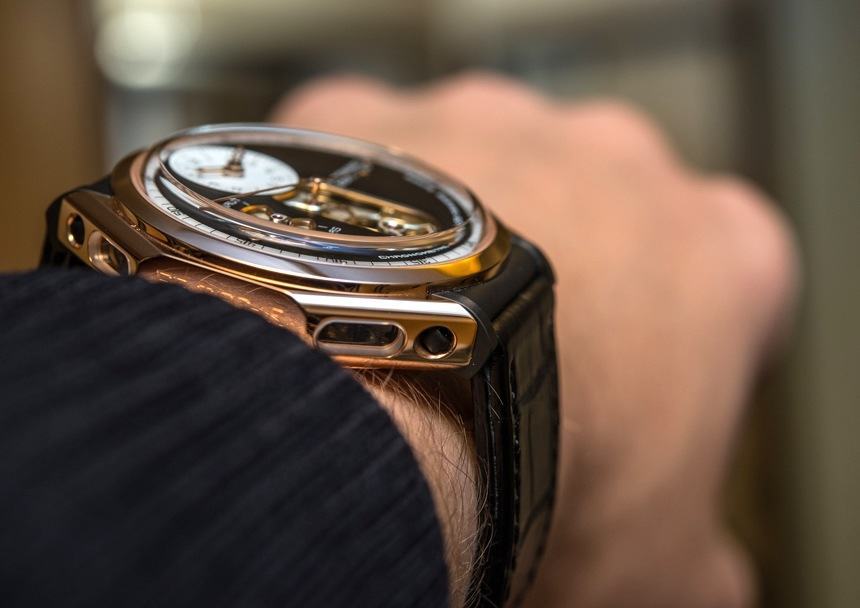
A very neat feature of the 44mm-wide and 13mm-thick white or rose gold case is the four sapphire openings set into the sides, revealing some of the inner workings of the movement – including some of the coolest bits, which we’ll get to discuss very soon. In between the lugs are inserts in titanium on the white gold, and black ceramic on the rose gold versions, making for a more complete octagon for the shape of the case – and, to some extent, actually reminiscent of the angular lug designs of the Audemars Piguet Royal Oak and the Hublot Big Bang. It is a neat way of incorporating more modern materials in the design, and also of adding a dash of complimentary color to spice things up a bit.
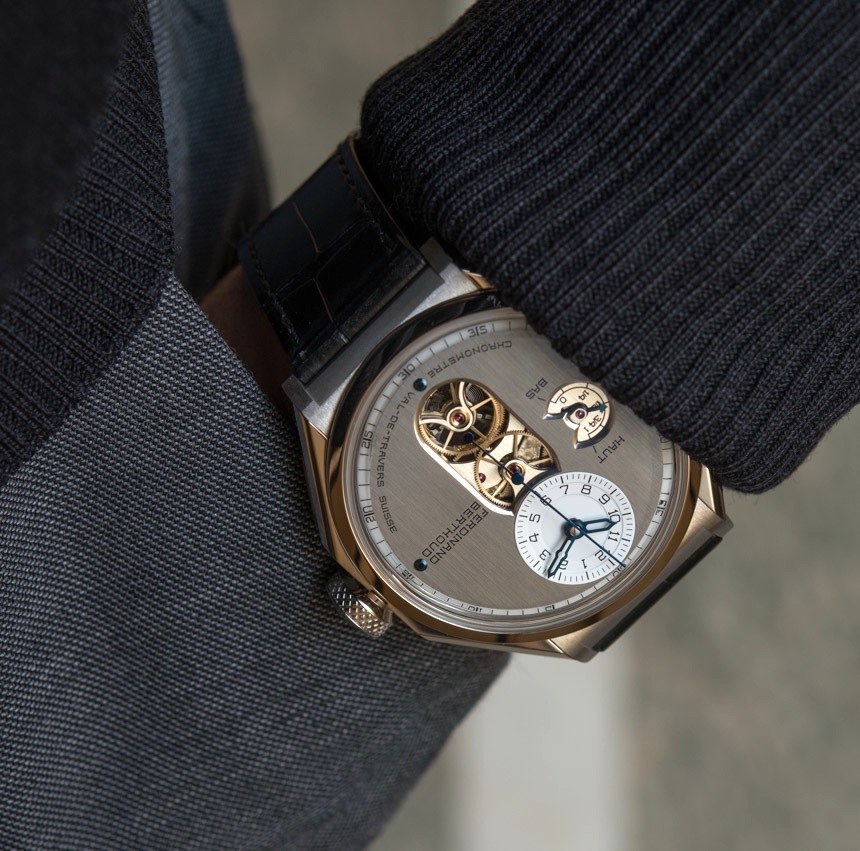
The result is a case with a lot of “wrist-presence” – and while some other, similarly sized, angular designs tend to feel rather, well, juvenile, when seen in the metal, the Chronométrie Ferdinand Berthoud FB1 feels much more like a grown man’s watch, something that demands watch wearing discipline. You could rock this around wearing shorts and flip-flops in Miami, much like you can paint a Ferrari neon green and fill the passenger seat with chihuahuas – it will take it with dignity, but won’t thank you for it.

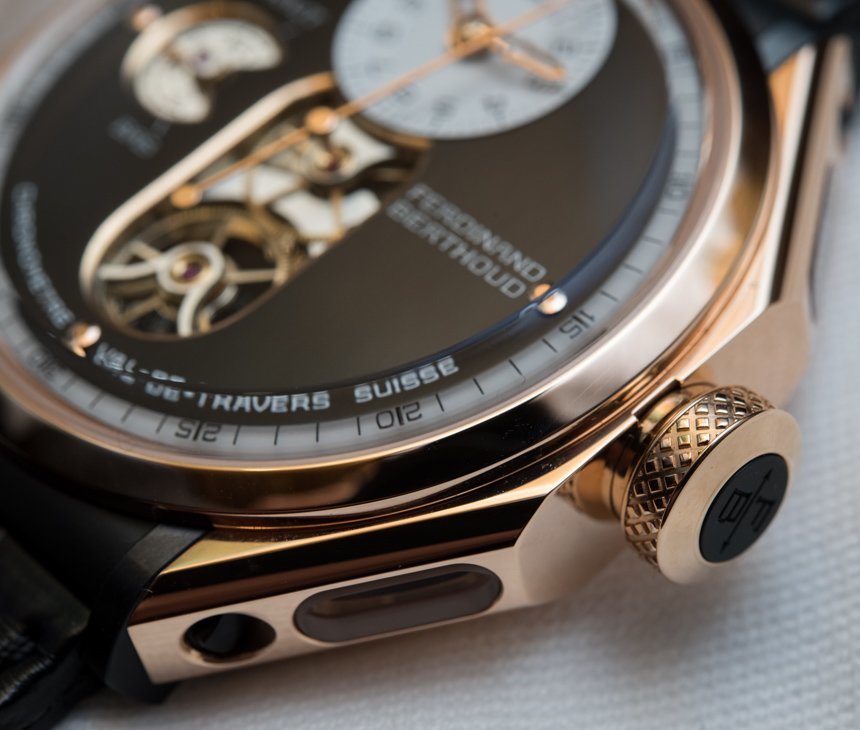
The case, as captured in the image above, is beautifully crafted, with sharp angles and subtle curves flowing into one another – a nice addition is the curved sapphire crystal that caps off the case and renders the design complete. The crown is just the right size, with a rose gold or black ceramic “medallion” in its center and knurling on its periphery – it is large enough to allow for comfortable setting and winding of the movement – and with that, we have arrived to the absolute centerpiece of this new release, and one that justifies all those years in research and development; and all your time reading through to this part.
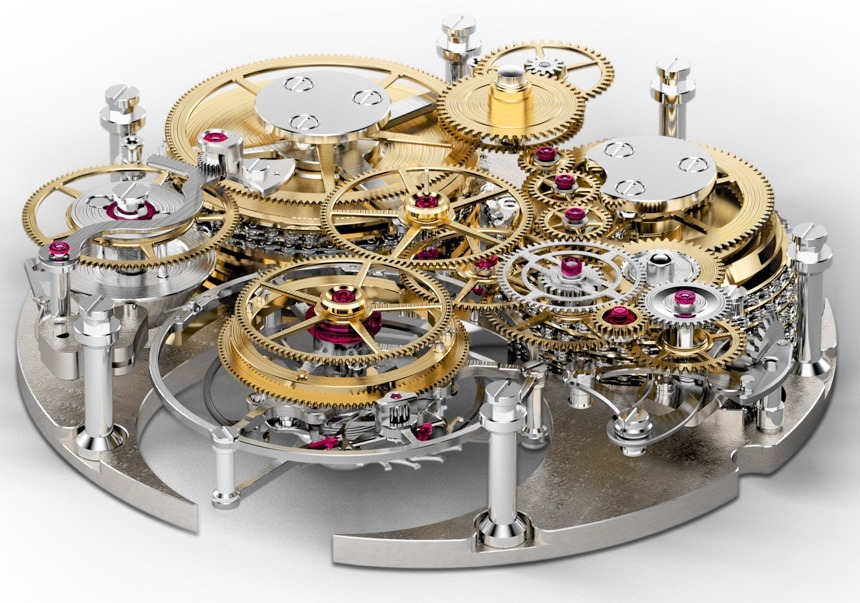
The Ferdinand Berthoud FB-T.CF Caliber
The picture above shows – and hides – a total of 1,120 components, 790 of which are used to compose the chain for the fusée and chain mechanism; but let’s not get ahead of ourselves. Once you get to see behind such a poetic arrangement of beautifully executed five-spoke wheels in gold, I suggest you direct your attention towards what actually holds all this magnificent structure up: a set of six polished titanium pillars.
Because the machining tools available during the mid-1700s did not allow for very precise manufacturing of brass plates, Berthoud (and his contemporaries) often used pillars in the construction of their calibers instead, as they were much easier to accurately cut to the desired height, allowing for a more precise fitting of the movement’s other components.
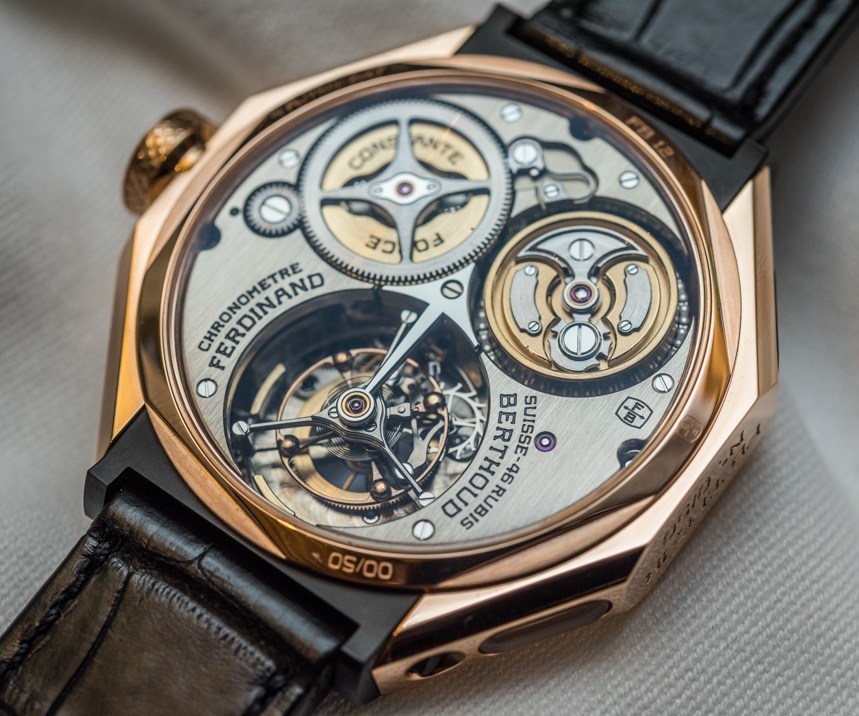
The movement looks stunning in the metal, with plenty of unique design (and functional) elements to really set it apart from the rest. Assembled by a dedicated team of watchmakers in a separate workshop using parts proprietary to this caliber – that is to say that the brand states that nothing whatsoever in here is shared with Chopard L.U.C watches or movements, not even the escapement. Given the number of proprietary components that this new caliber requires, this is not too difficult to believe.
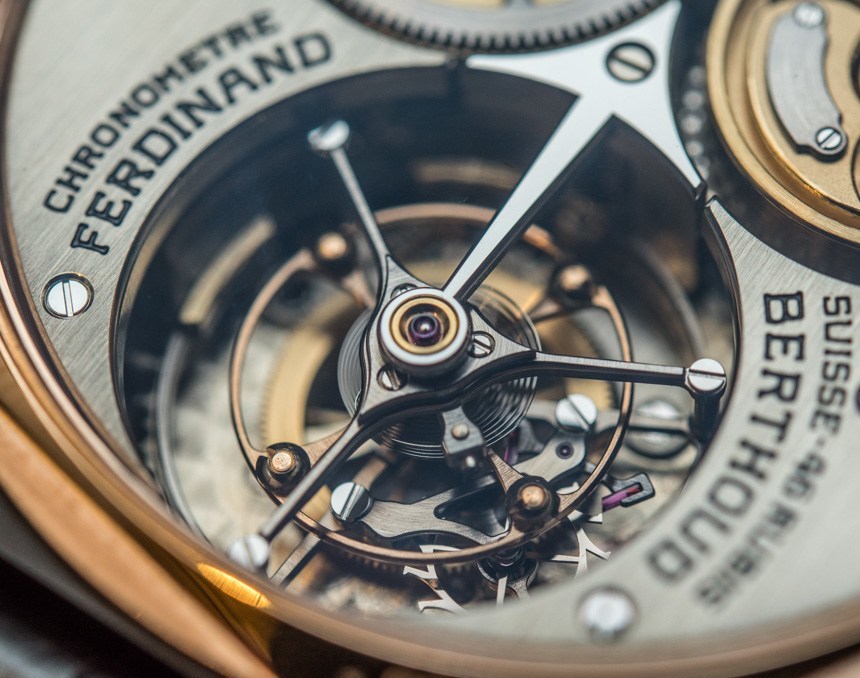
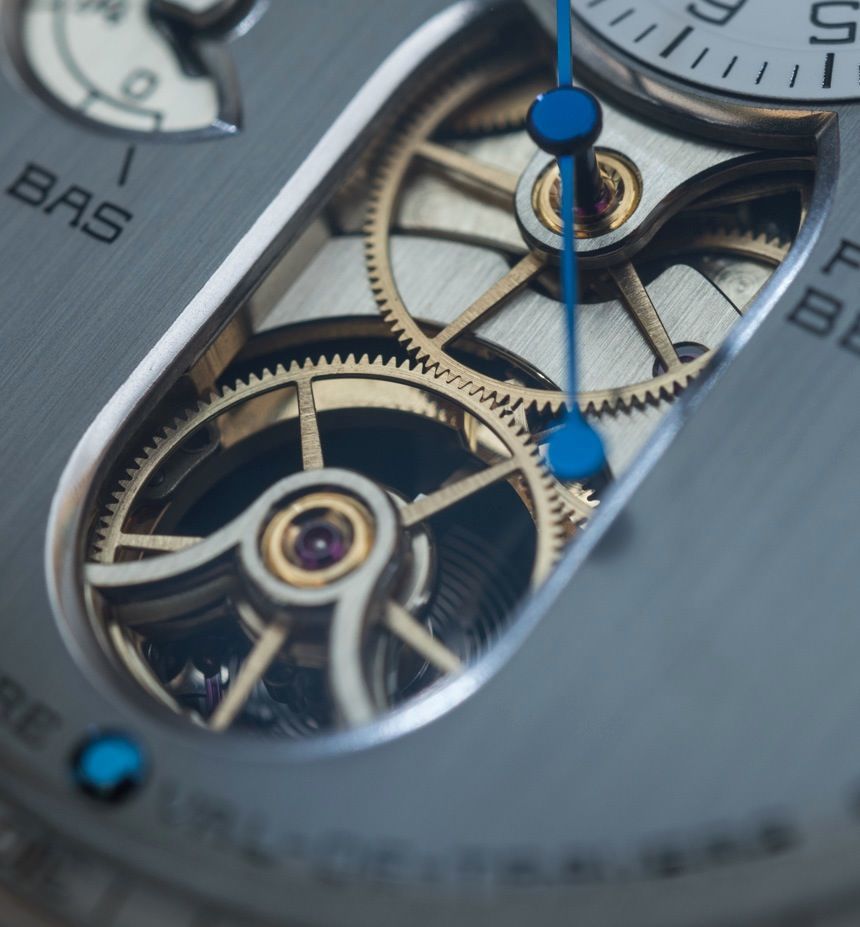
More importantly, the FB-T.FC caliber really is a watch enthusiast’s wet dream. It is as though someone – let’s call him Karl-Friedrich Scheufele – ticked off some of the top picks from the imaginary “high-end watch caliber options list”: One-minute tourbillon with balance adjustments in solid gold, copper beryllium balance wheel with variable moment of inertia solid gold weights, paramagnetic self-compensating balance spring, fusée and chain with 790 parts, maltese cross power reserve limiter system to limit the mainspring to only run when it supplies ample torque, unique direct drive seconds linked directly to the tourbillon assembly, and a unique power reserve indicator mechanism – to name really just the most outstanding ones.
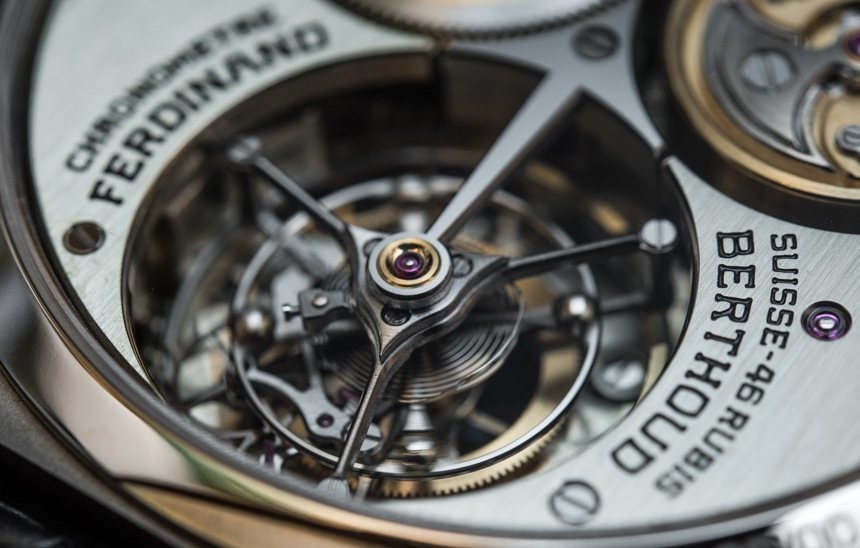
The tourbillon is up there with some of the best. Exposed in a very large, perfectly round opening on the case back side, it runs at 3 Hertz (for the trained eye that is noticeably slower than its modern 4 Hertz companions, but still fast enough to be COSC accuracy certified). The tourbillon itself is very generously sized – forget those petit ones that we have been seeing all too often recently – which is further emphasized by the unusually thin spokes of the upper tourbillon cage. Ironically, the tourbillon itself is the only major feature in the movement that isn’t “flying”; it is secured from above by a large, mirror-polished (i.e., from some angles pitch black), arrow-shaped cock.
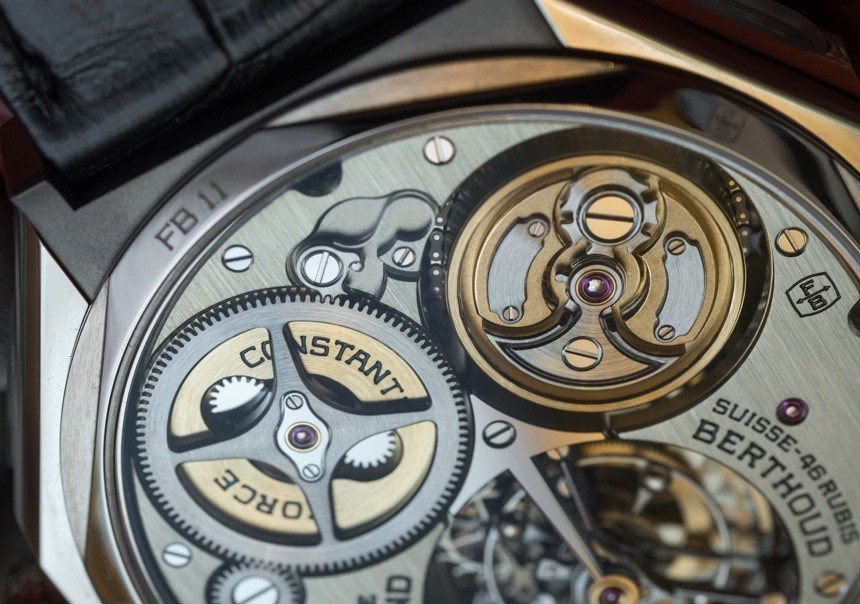
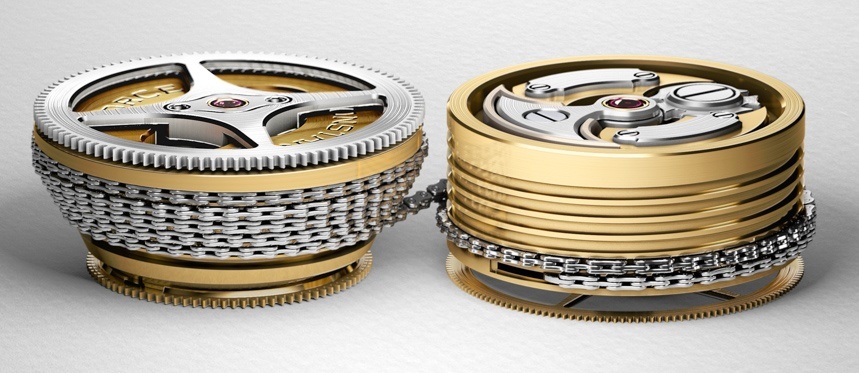
Ferdinand Berthoud refers to it as “suspended,” but I would have much preferred the term “flying” to be used when describing the fusée and chain mechanism: comprising a cone-shaped pulley (to the left on the image directly above) and a barrel that contains the mainspring, the fusée and chain was designed to compensate for the decrease in the torque of the mainspring as it unwinds throughout its power reserve. Thanks to the change in the ratio on the cone-shaped pulley, it helps to drive the going train in a way that compensates for the decrease in the torque of the mainspring – but for all this to happen, a chain needs to connect the two.
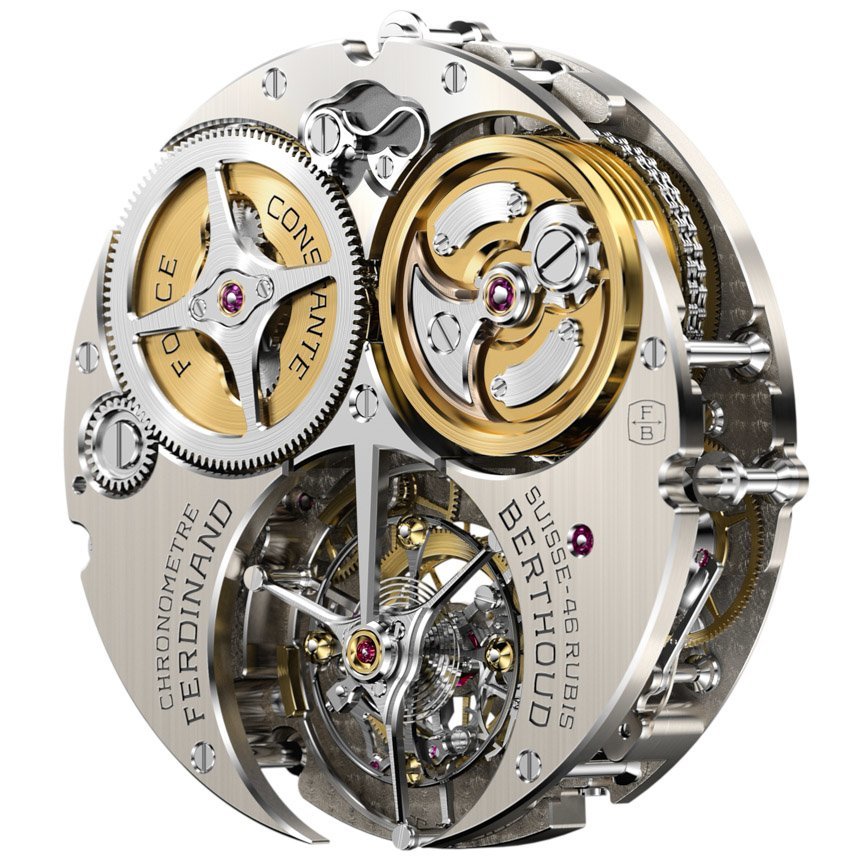
Composed of nearly 800 parts, it takes a watchmaker over two full days just to assemble the 28-centimeter-long (around 11 inches) steel chain, which then needs to be carefully fixed to and wrapped around the pulley and the barrel. The fusée and chain mechanism of the Chronométrie Ferdinand Berthoud FB-T.FC movement is “suspended” in the sense that from the case back side, there are no bridges or plates holding the pulley and the barrel down – they are only fixed to the movement from one side, much like a flying tourbillon is. Flying Fusée And Chain – so niche and so extremely difficult to engineer, that it really can only exist in such a unique brand.
Thanks to this “flying arrangement” though, the movement is just about 8 millimeters thick, a remarkable achievement for a caliber as complex as this one. The power reserve is 53 hours – as I learned, it would be around 80 if it was not for the so-called Maltese cross stopwork that limits the number of winding turns of the mainspring, ensuring that the watch only runs when there is enough torque coming from the mainspring.
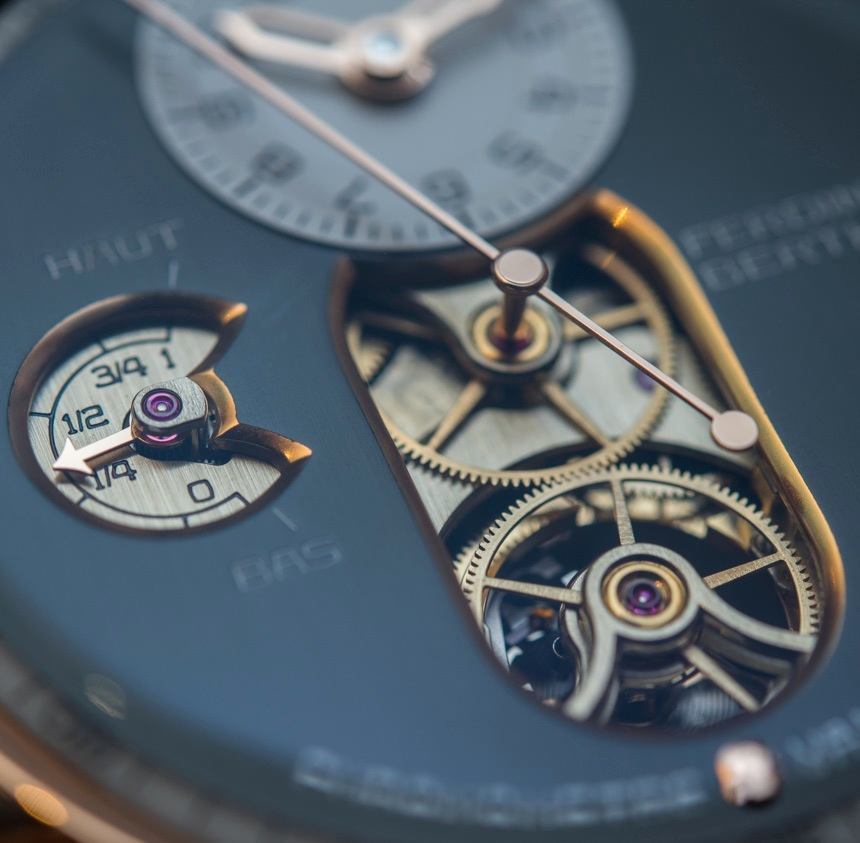
Torque is, actually, all the more important here because the Chronométrie Ferdinand Berthoud FB1 watch features something called a direct drive seconds hand. What this means – and this “direct drive” is what you see exposed through the dial’s hippodrome-shaped opening – is that the tourbillon assembly has another, extra wheel added to it. This is the wheel that you see on the dial side. As the tourbillon makes one revolution per minute, this wheel (because it is fixed to the tourbillon) naturally also makes a full rotation in under 60 seconds.
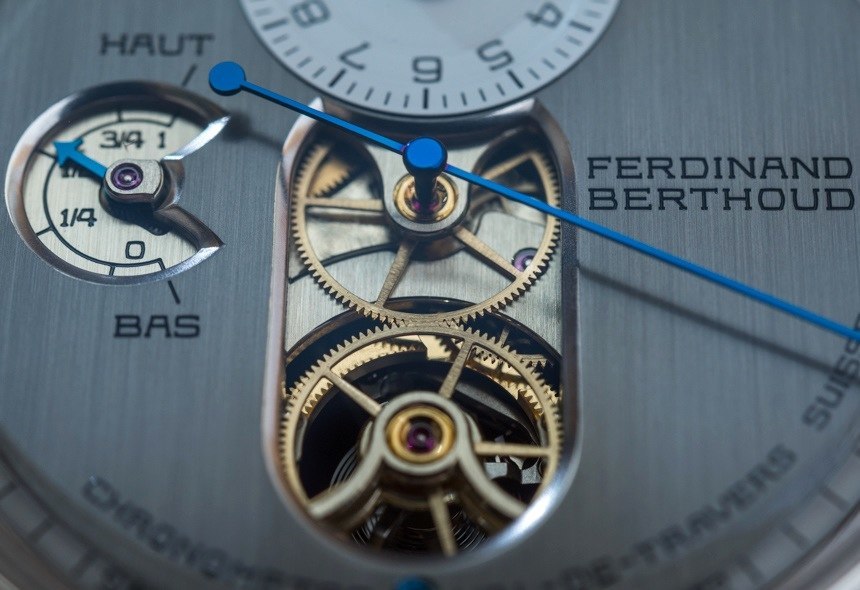
To have the central sweeping seconds hand, a wheel of the exact same size (and with the seconds hand fitted onto it) is connected, and hence as the tourbillon rotates, it also drives the central seconds. Torque, i.e., ample force from the mainspring, is necessary because the tourbillon is very heavy and puts a lot of drag on the movement as it is, while adding two extra wheels and a large and heavy seconds hand just makes all that considerably worse. This explains why only about 60% of the mainspring’s power can be harnessed – the last 40% is just simply not enough to reliably carry all this weight and deliver COSC certified timing at the same time.
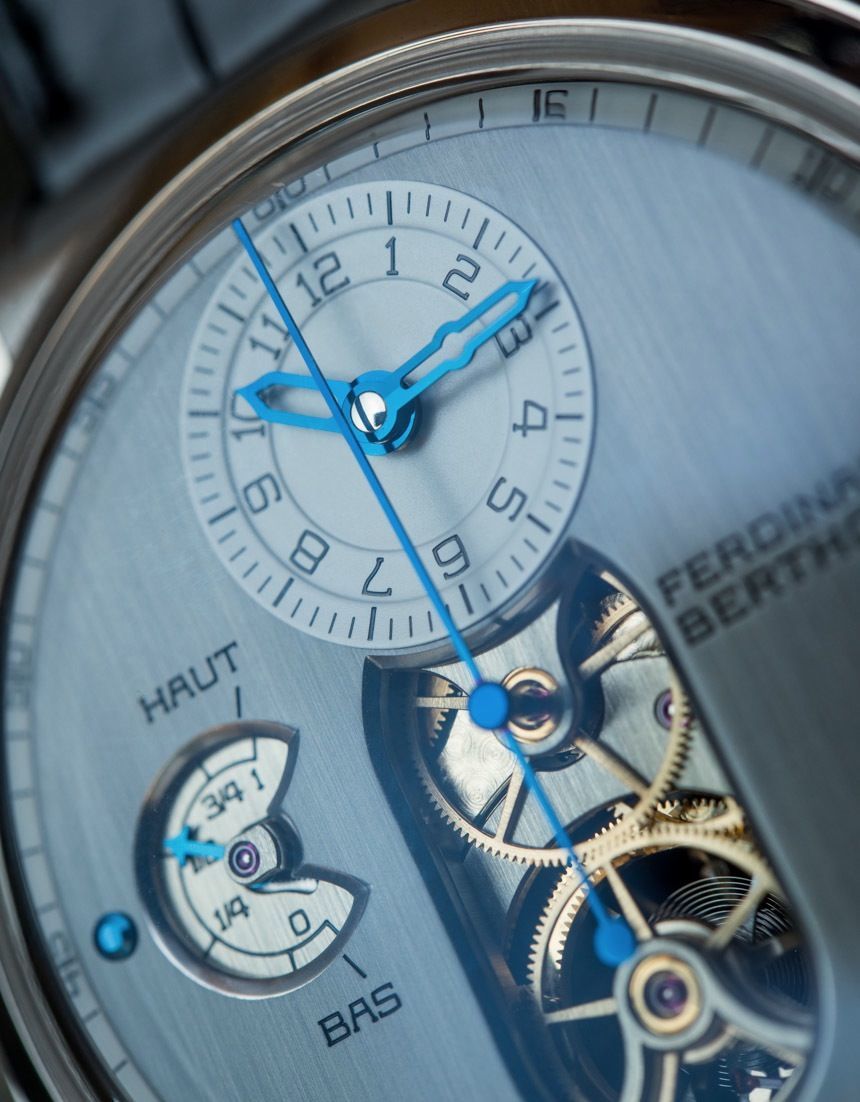
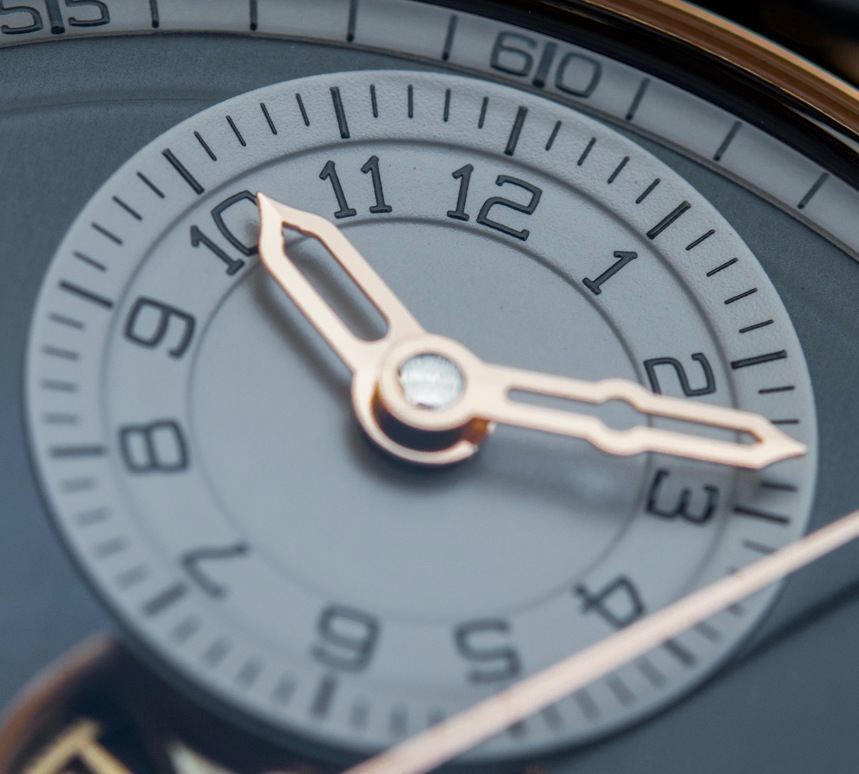
Hours and minutes are displayed on a sub-dial at 12, with hands that pay tribute to the design preferred by Berthoud himself. As one would expect from a thoughtfully designed watch, the gold hands are highly legible and easy to distinguish even at a quick glance. With all this eye-candy, for many, it will take a while to realize the unique font that the brand’s creative director Guy Bove designed specifically for Chronométrie Ferdinand Berthoud. As he explained, it is a mix between the cursive hand-writing of old and the more legible, technical hand-writing font that is taught to and used by engineers today. With its serif elements and slightly curved lines, it is another step towards making sure that the Chronométrie Ferdinand Berthoud FB1 is a bespoke watch, down to its finest details – and it also shows the attention to detail that was sought and demanded by Mr. Scheufele.
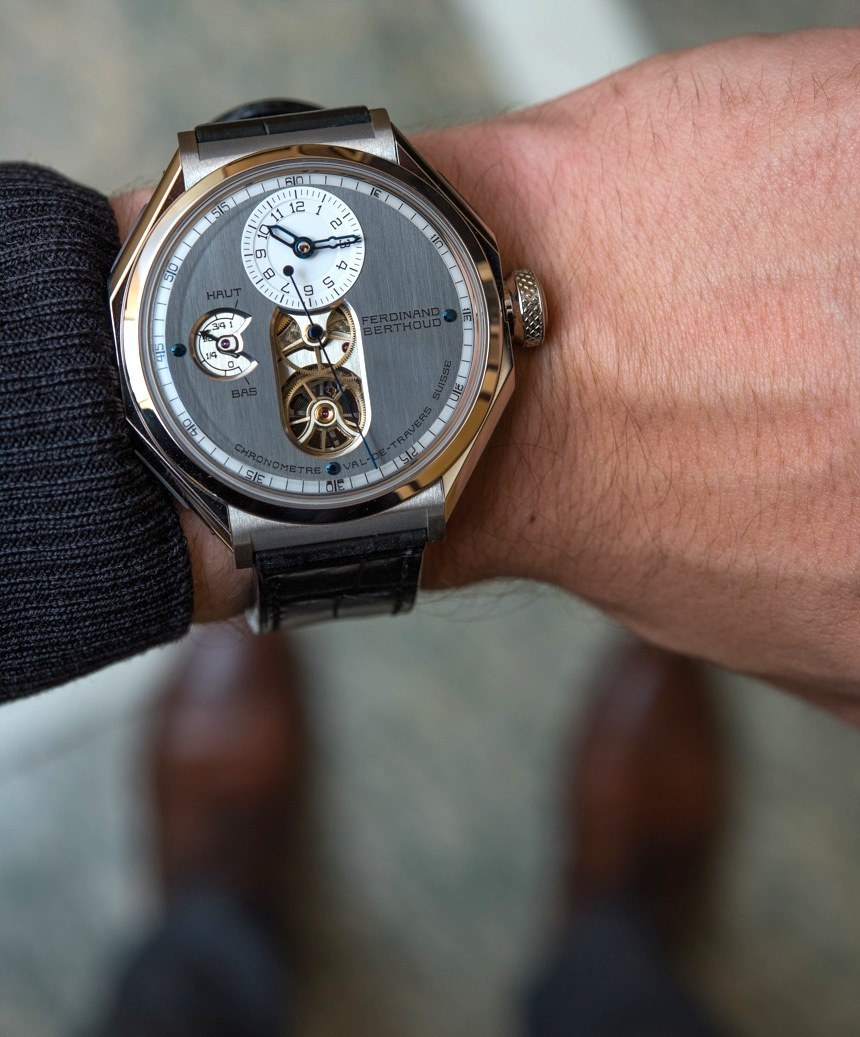
Much as is the case with the Ferdinand Berthoud heritage, there is so much more to the Chronométrie Ferdinand Berthoud FB1 than first meets the eye. The octagonal case is a nod towards the gimbal system used by the master watchmaker for his marine chronometers – and it even hides a cylindrical case inside – while the movement features a beautifully executed tourbillon and a range of features each of which would be more than impressive if they stood on their own, while, last but not least, the overall quality of execution leaves no room for error, not even if we are talking about a new brand…
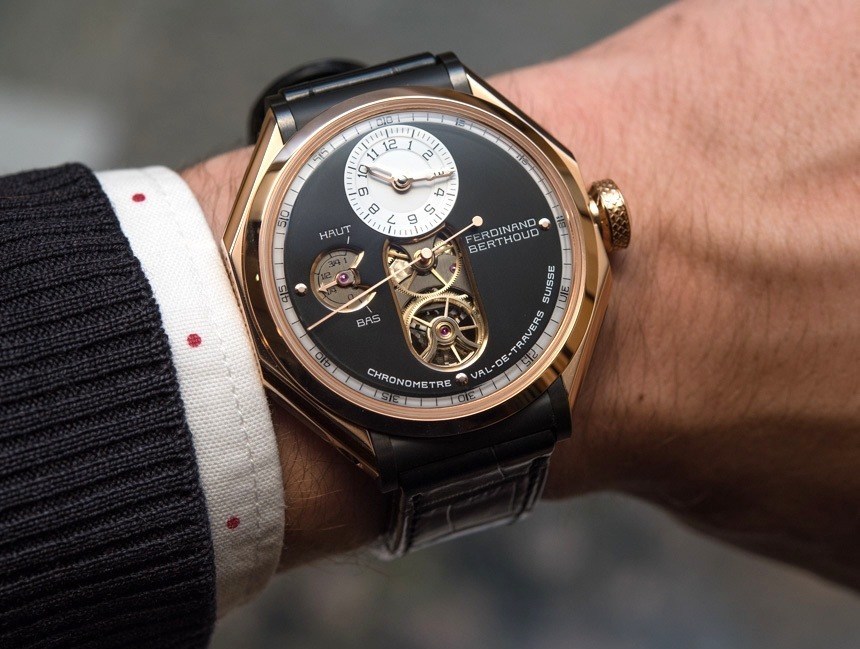
…And that is because we really are not doing that, as Berthoud’s remakable heritage made for a solid foundation, and it was discovered and thoughtfully carried on by someone in the watch industry who has already built two successful high-end brands (with Chopard and Chopard L.U.C). Put into practice by a dedicated team – thanks to some vast financial and other investments – the Chronométrie Ferdinand Berthoud FB1, limited to 50 pieces and priced at 220,000 Euros in either metal, really is a convincing start to what appears to have the potential to become, over the years, a well-developed competition to present haute horlogerie greats like F.P. Journe and Greubel Forsey, not to mention the high-end collections of larger brands. ferdinandberthoud.com

